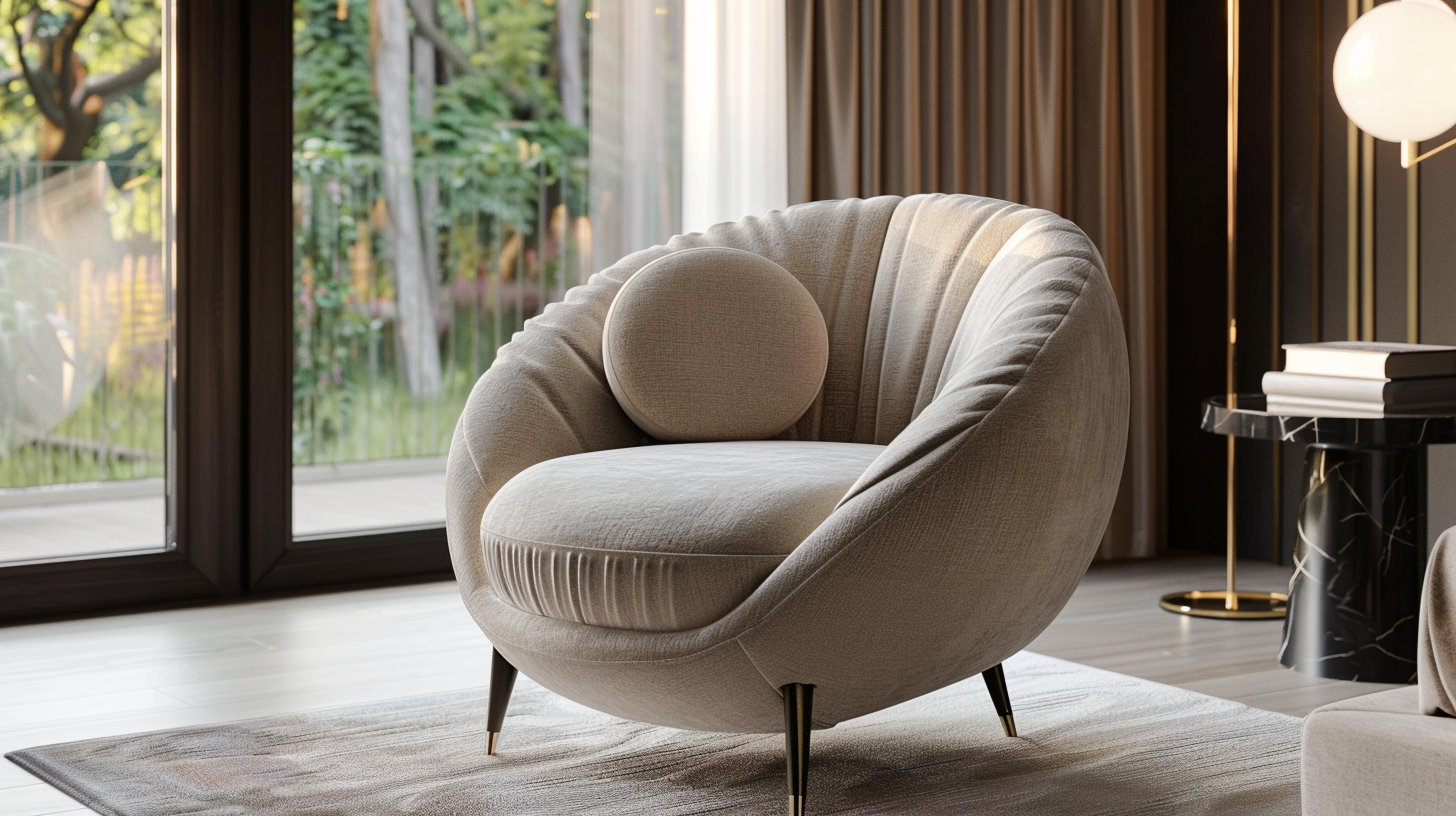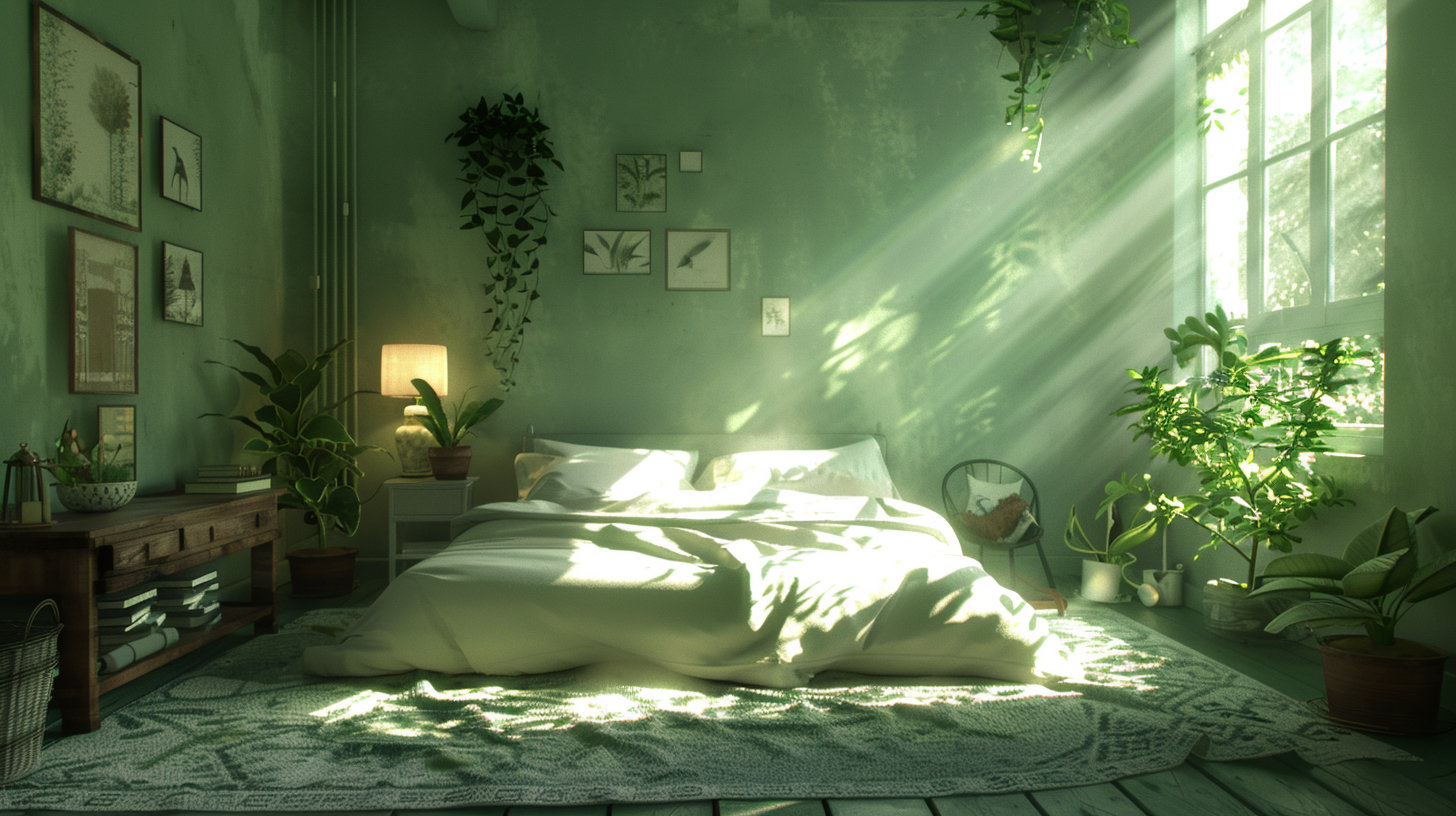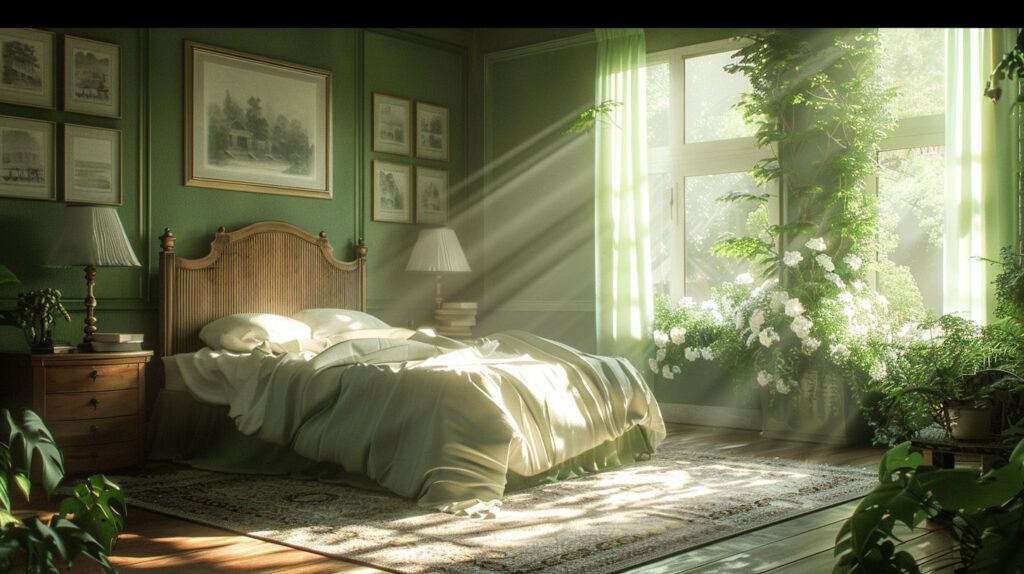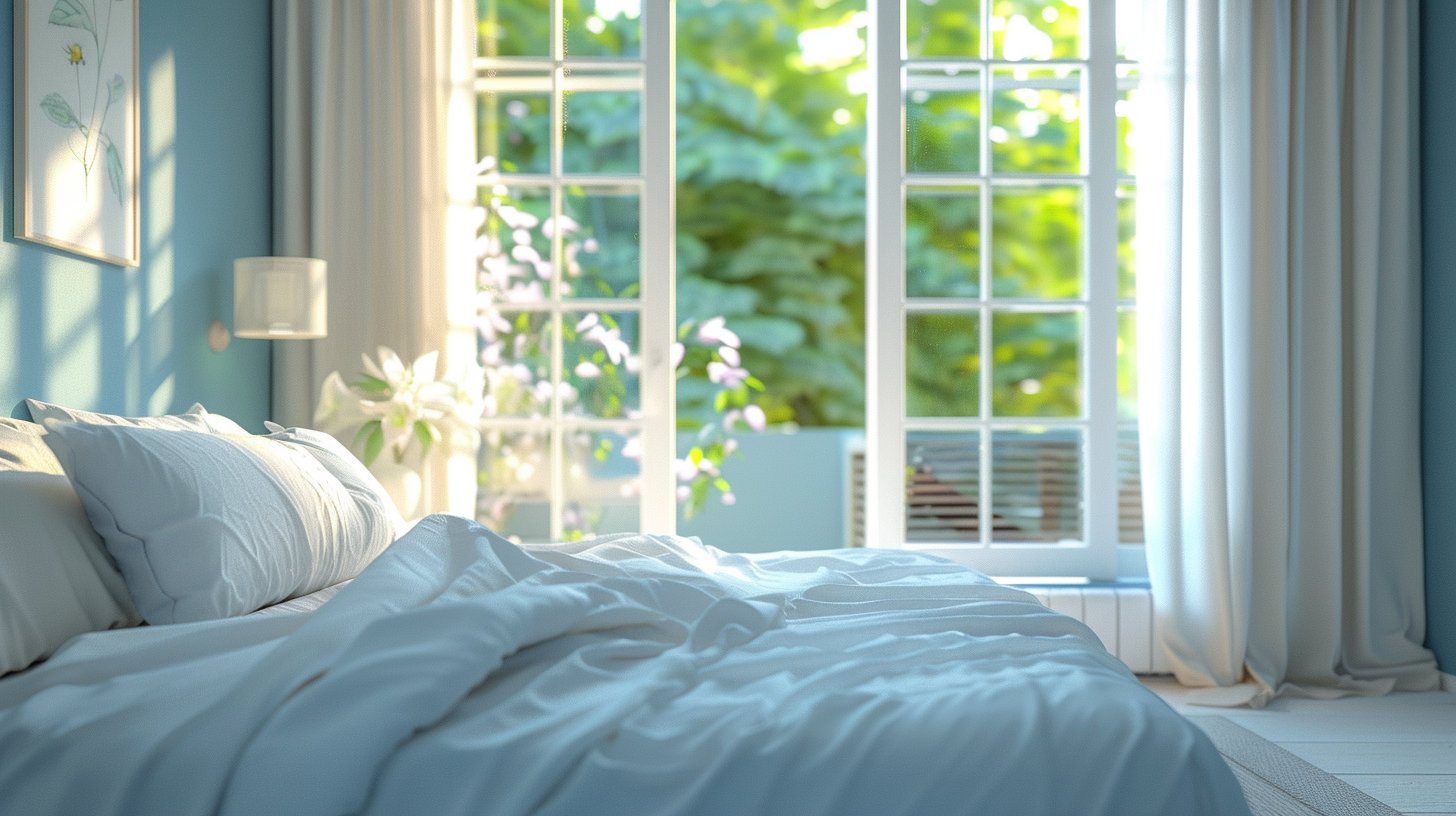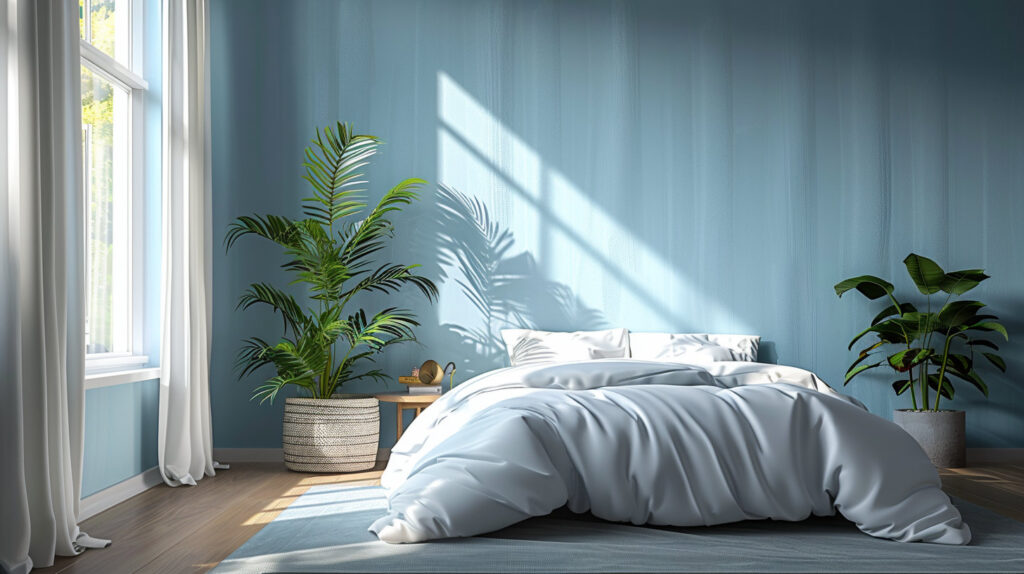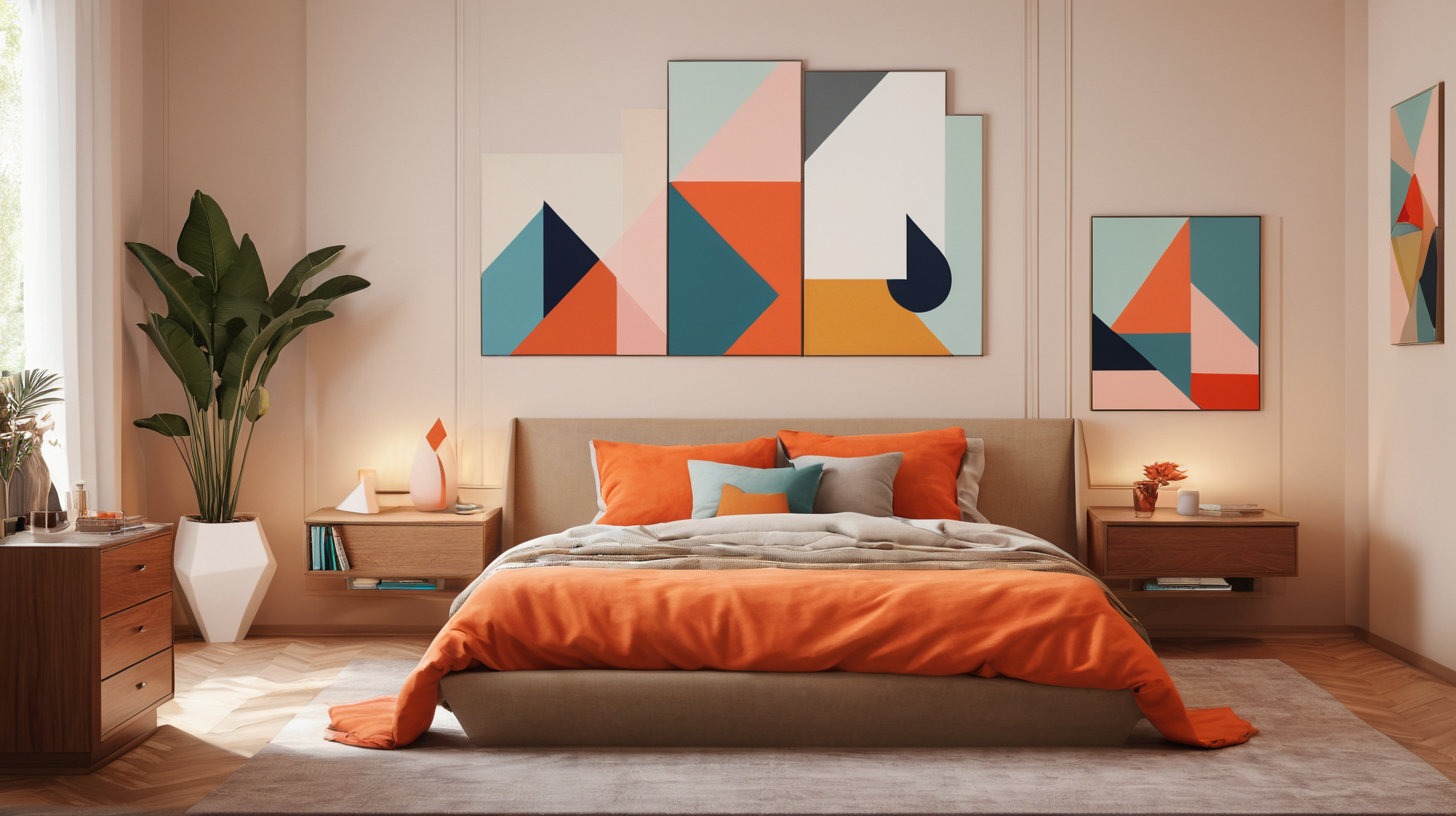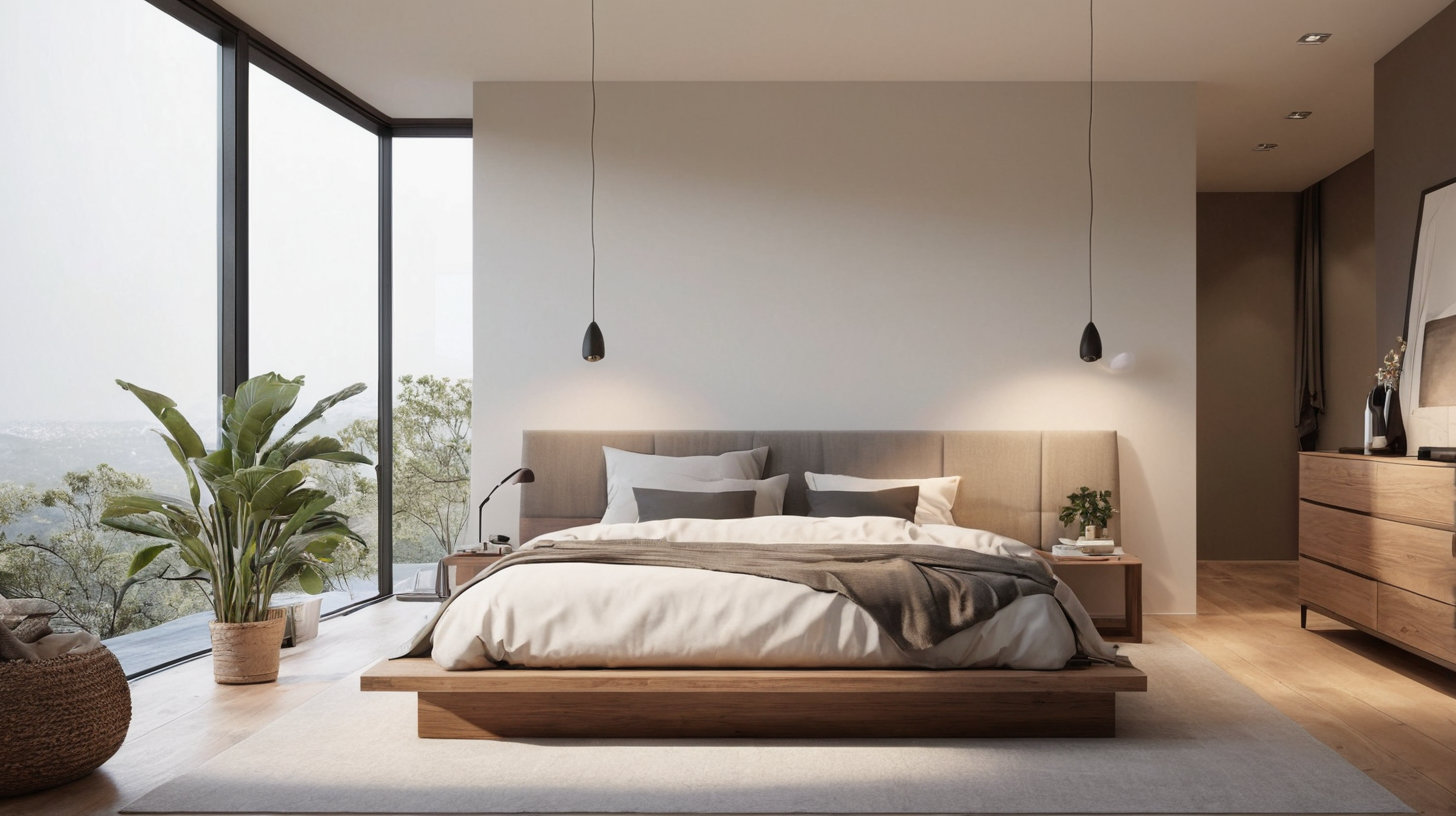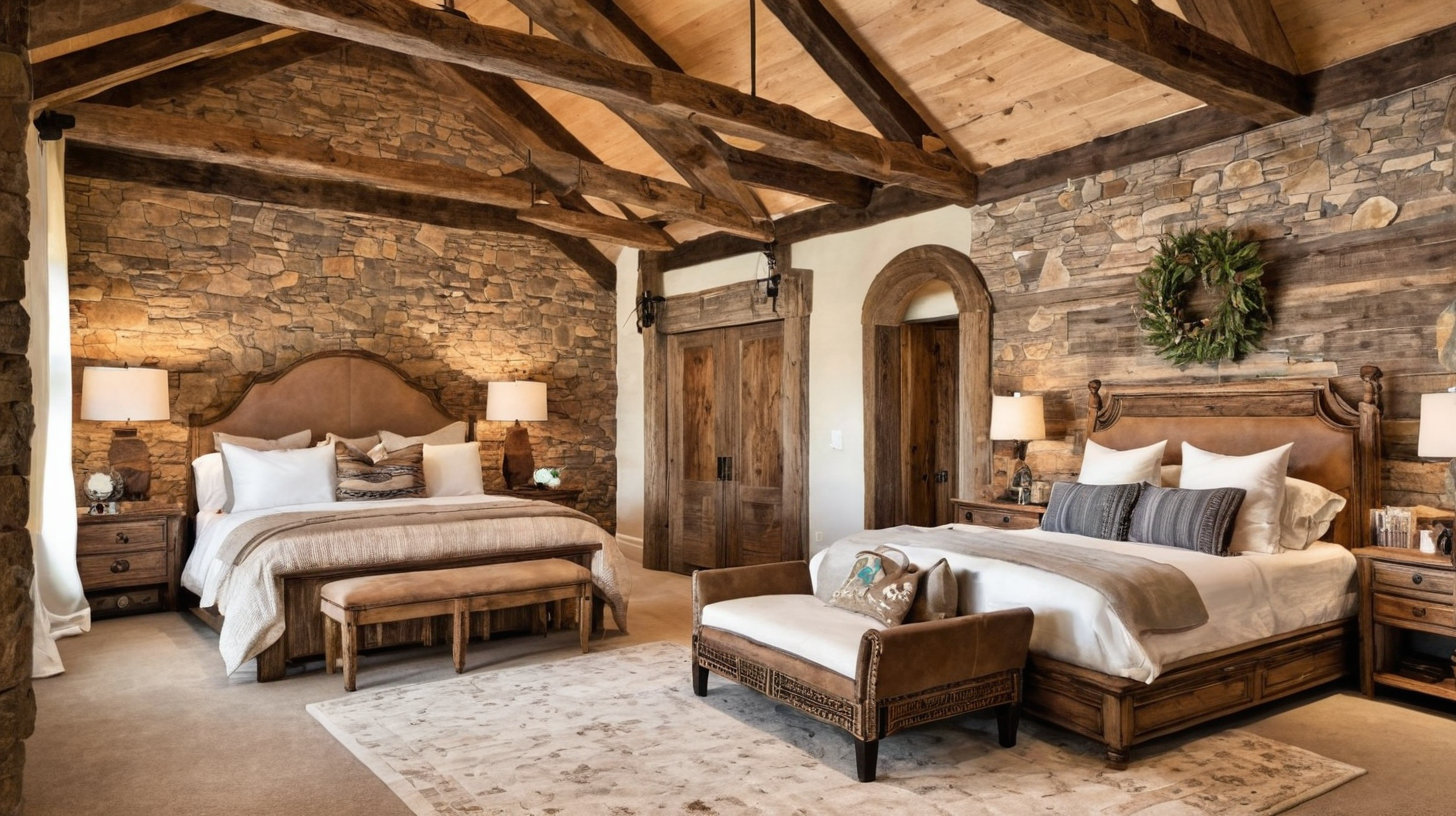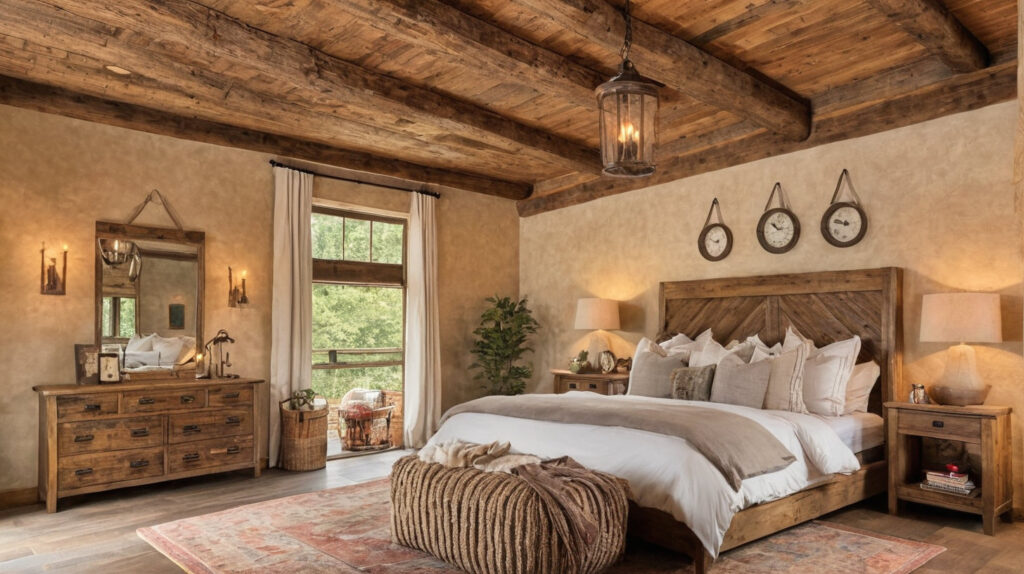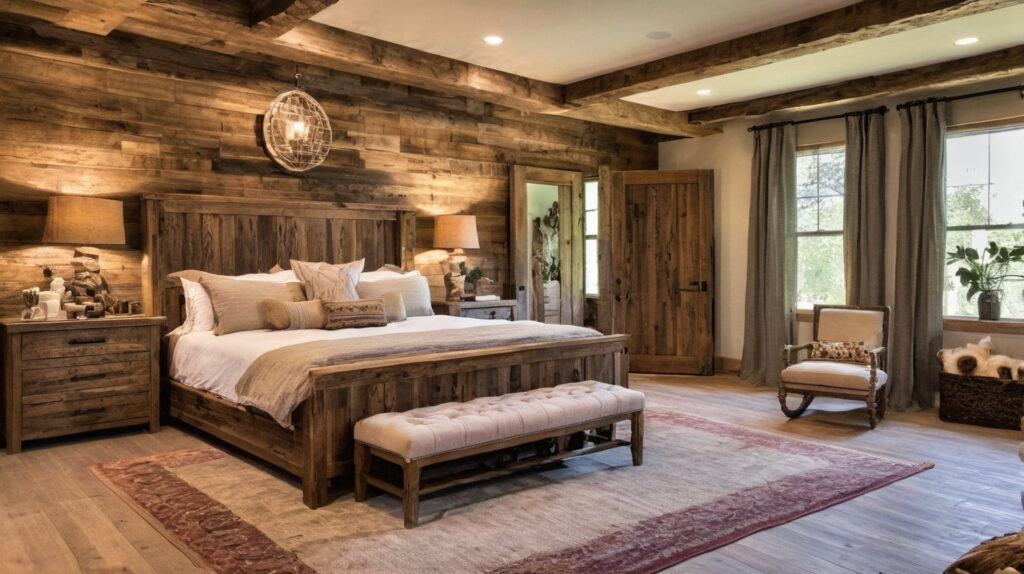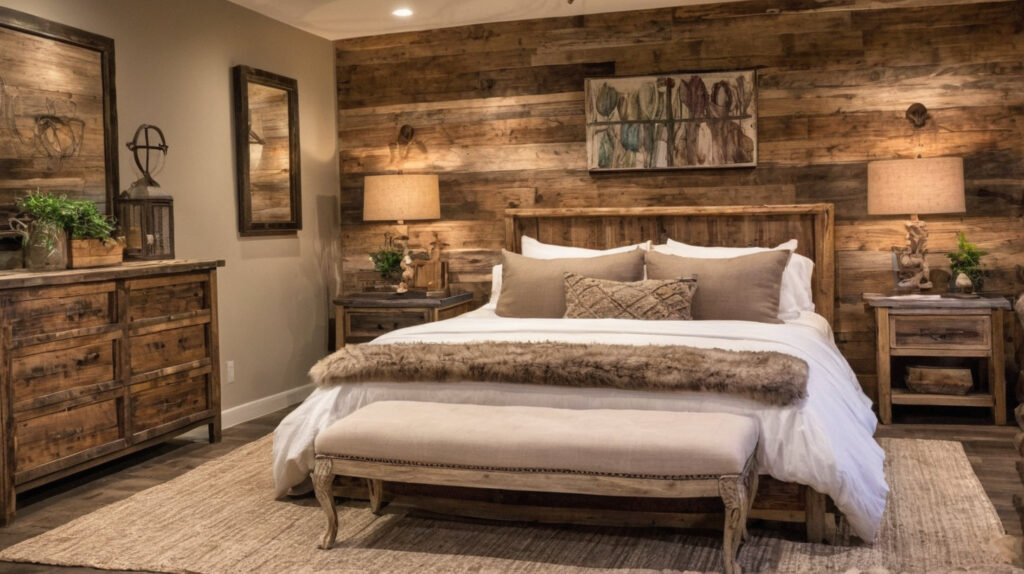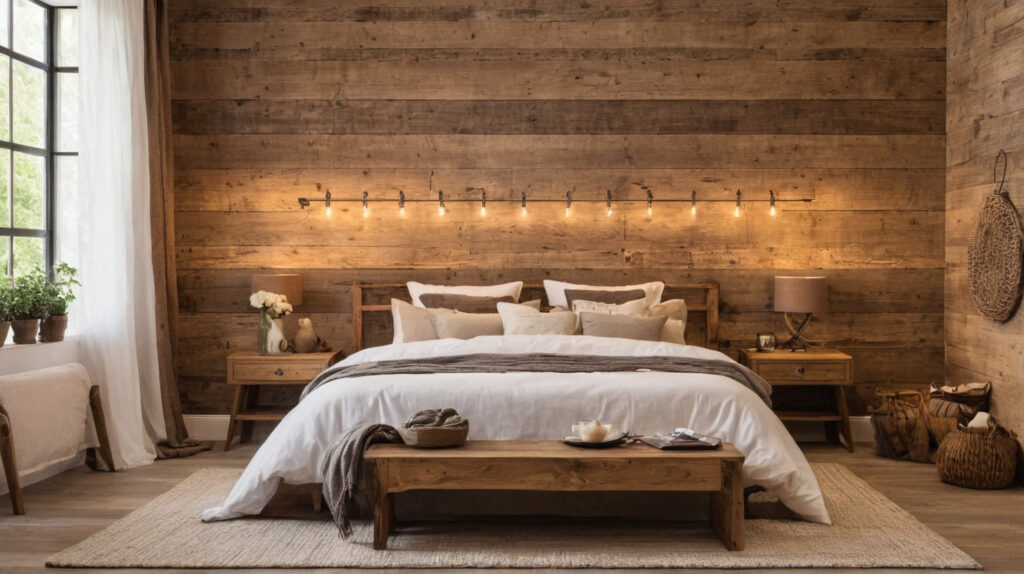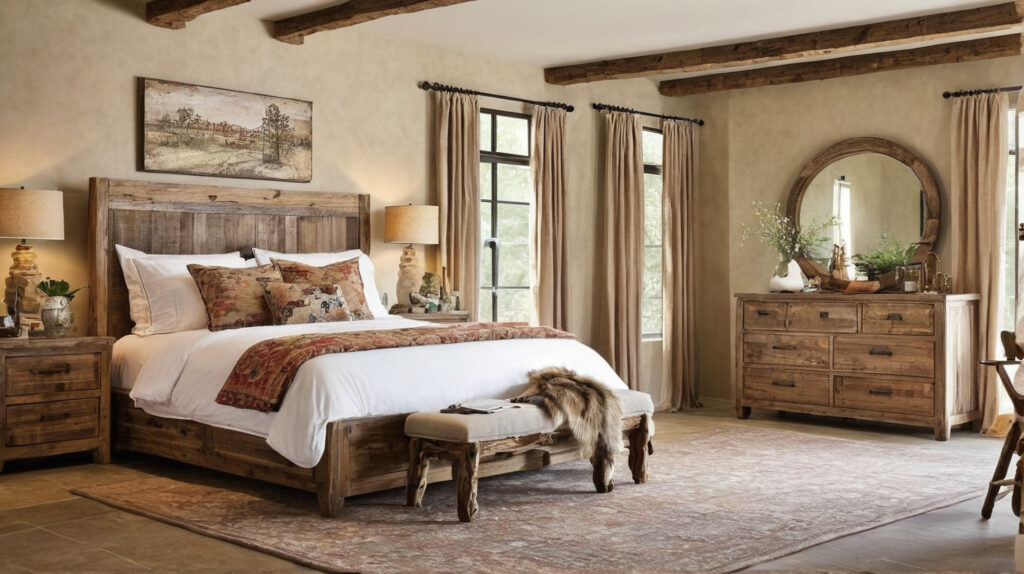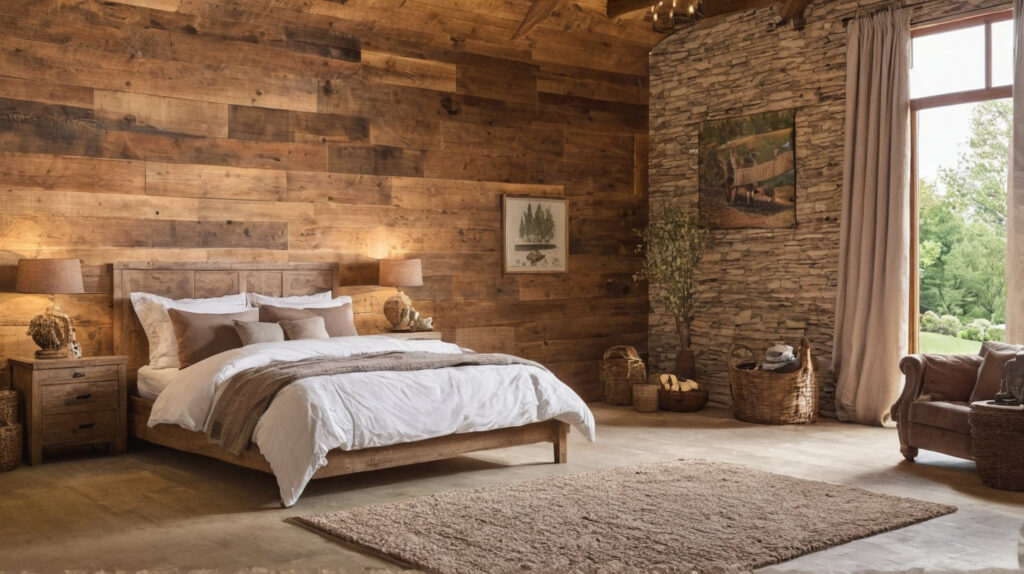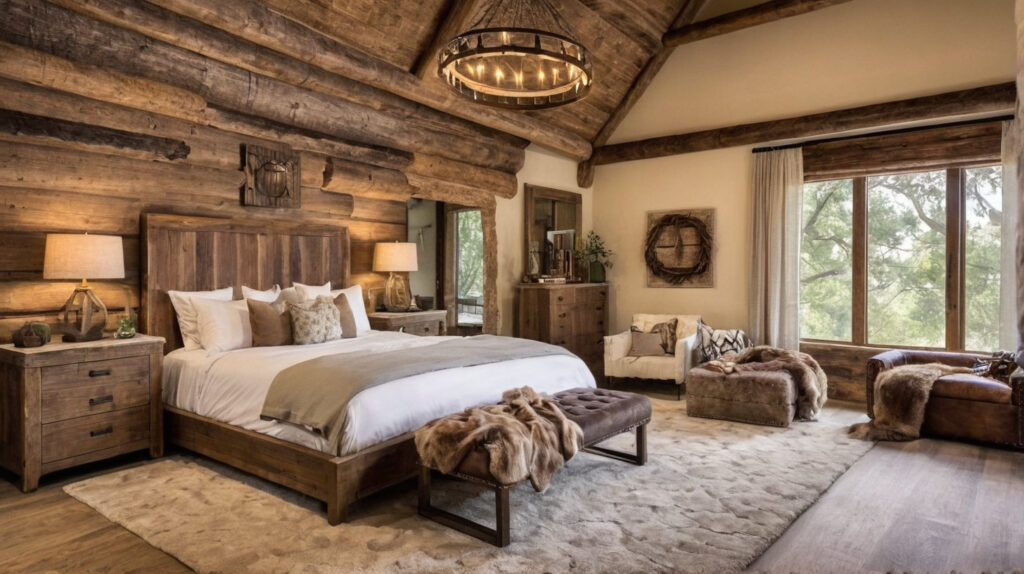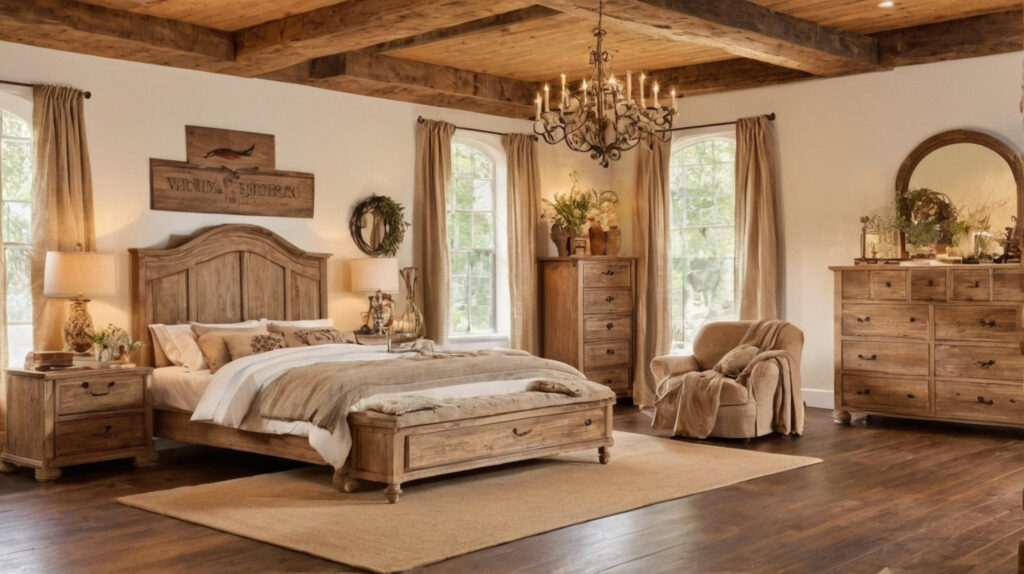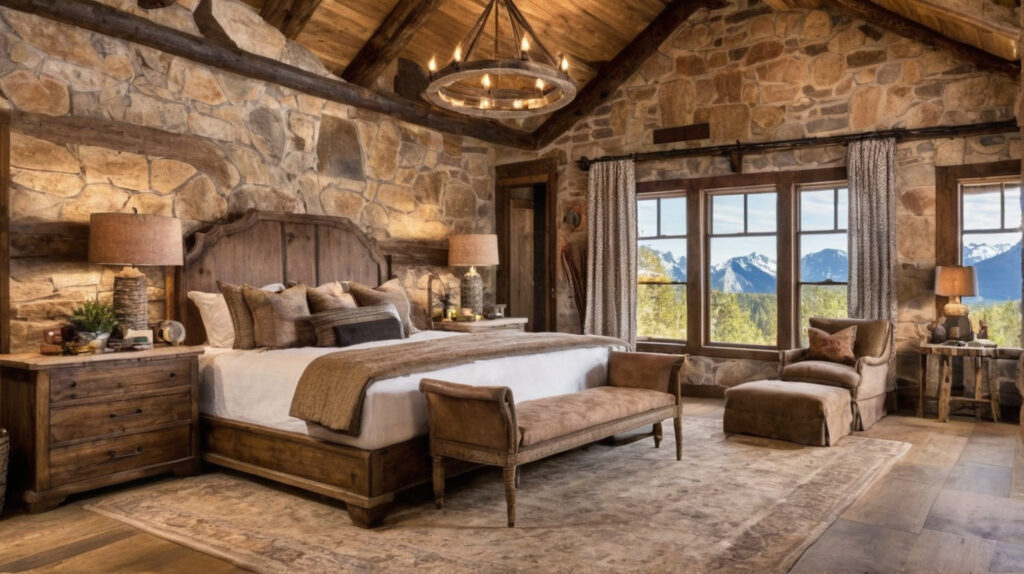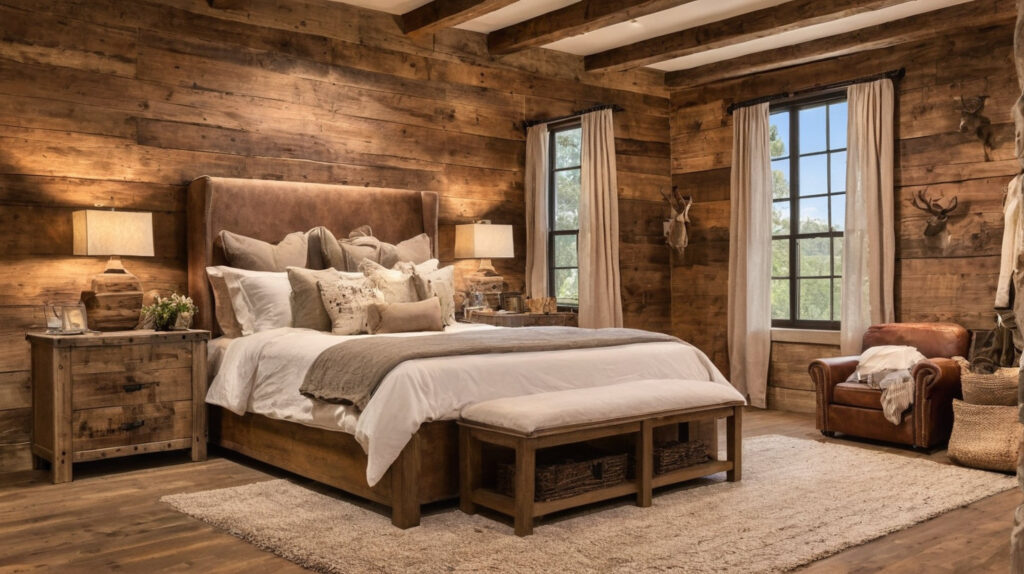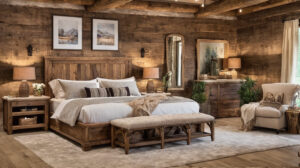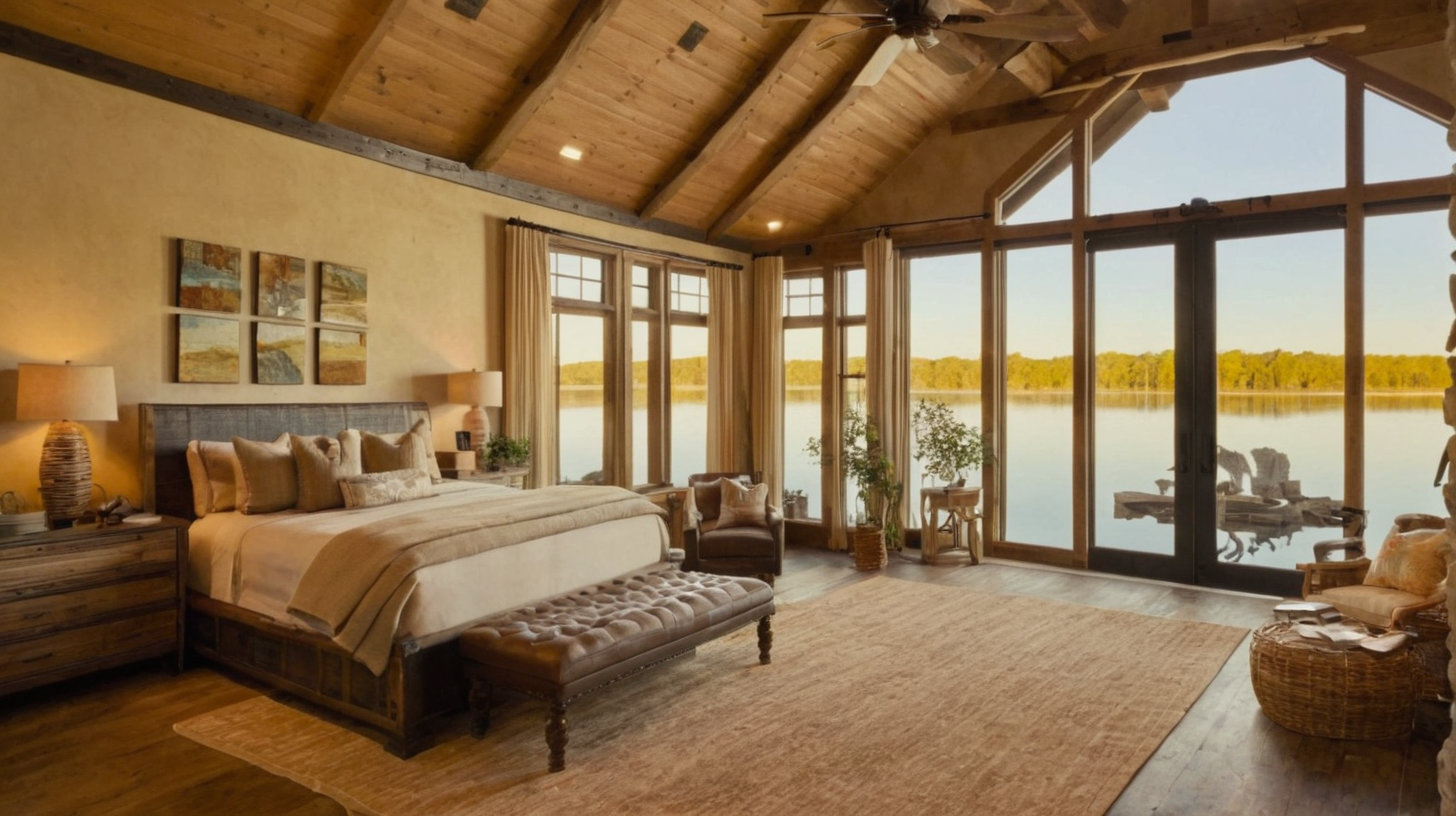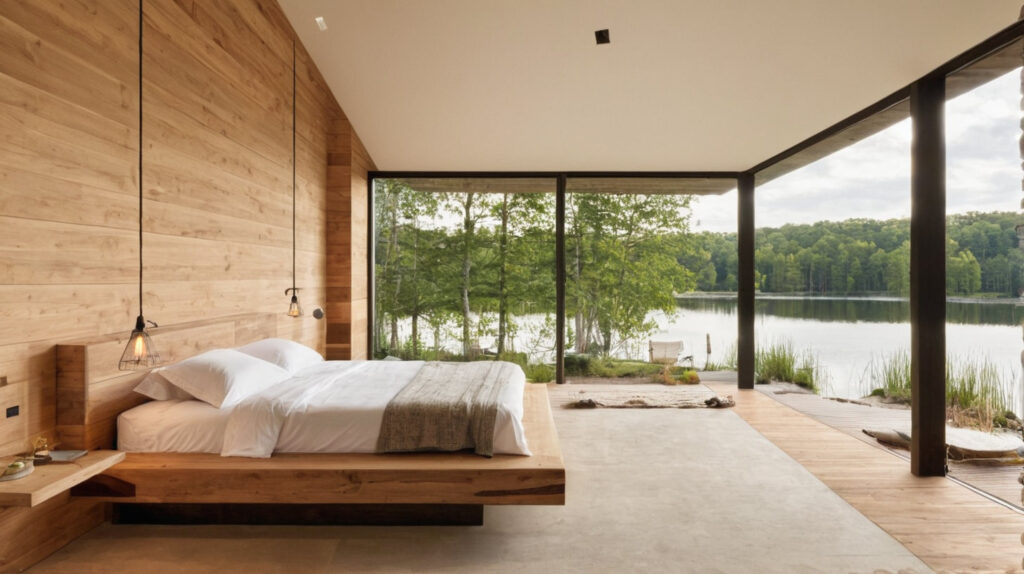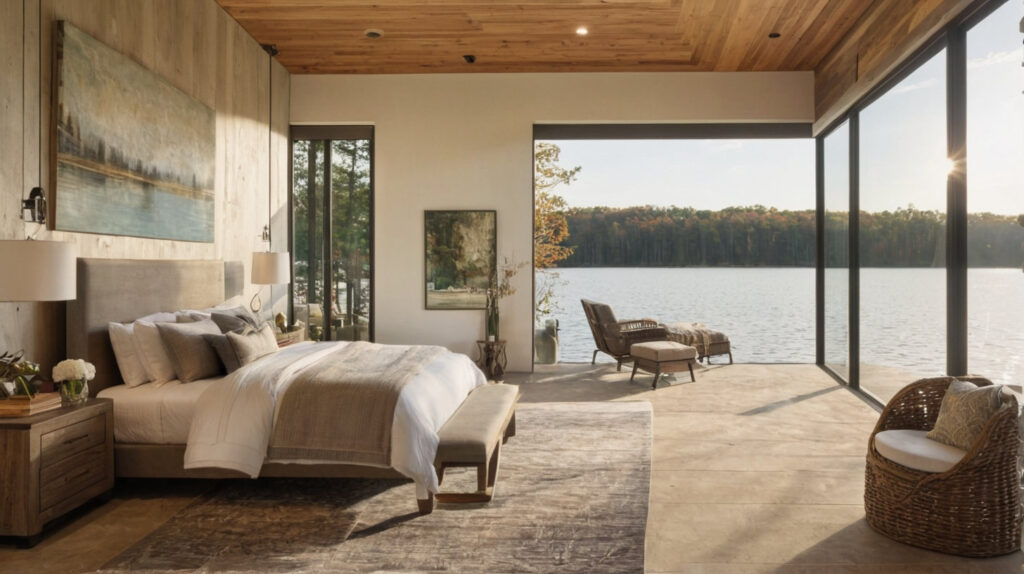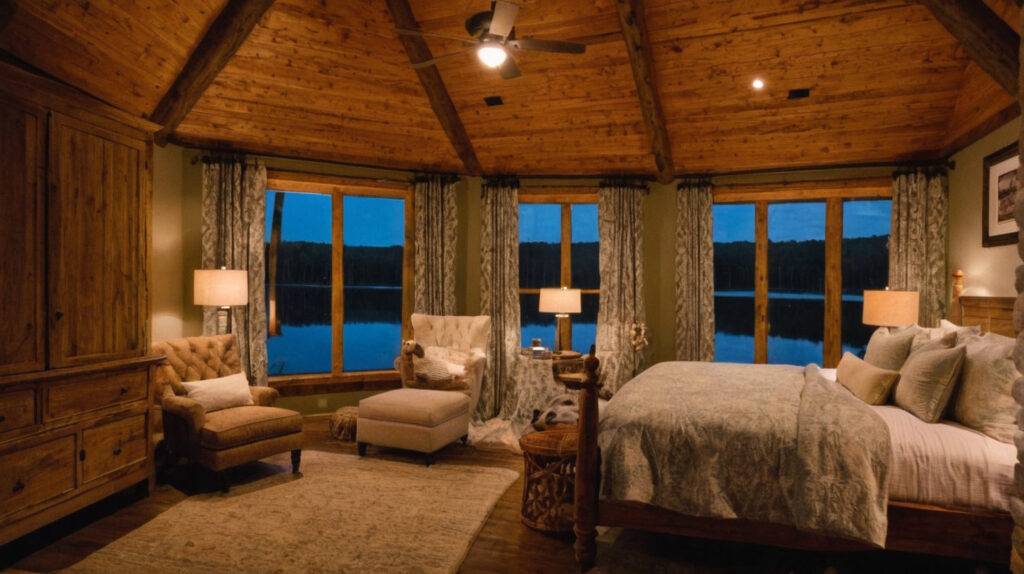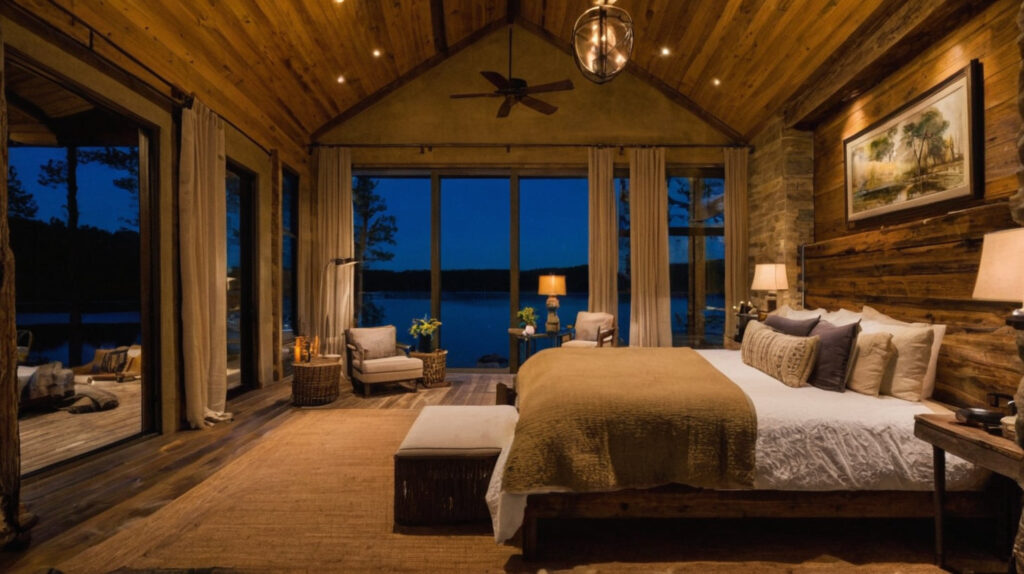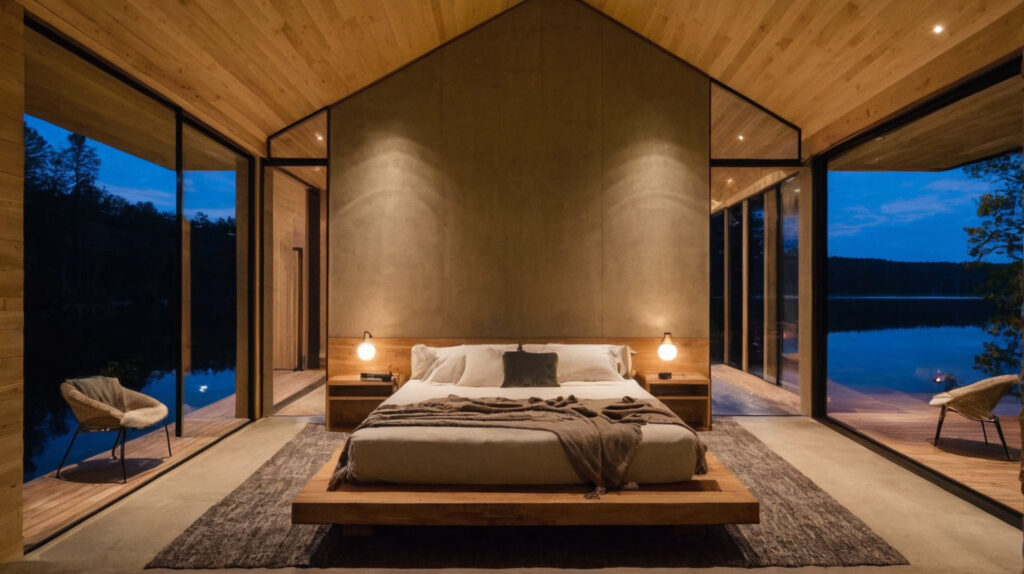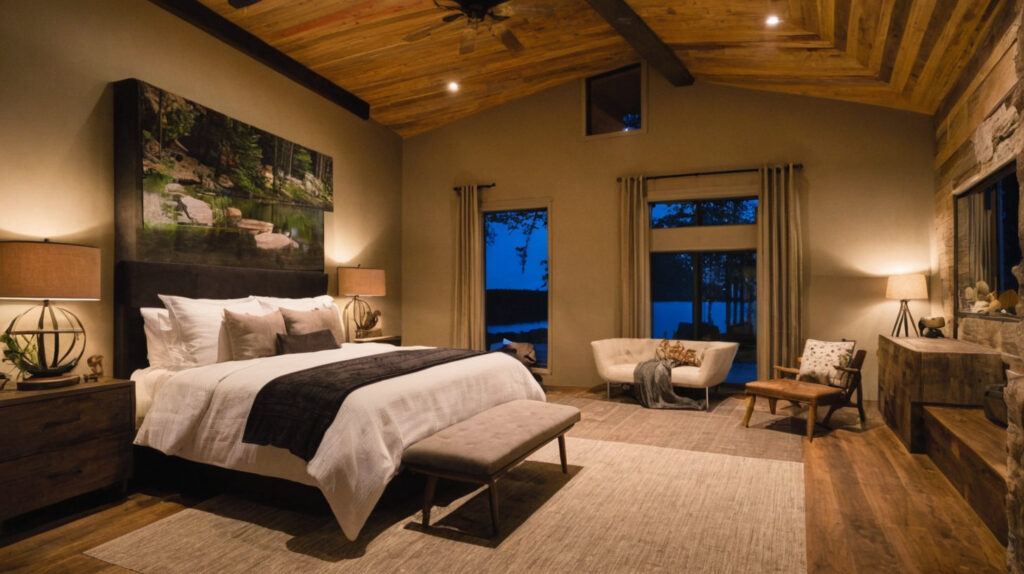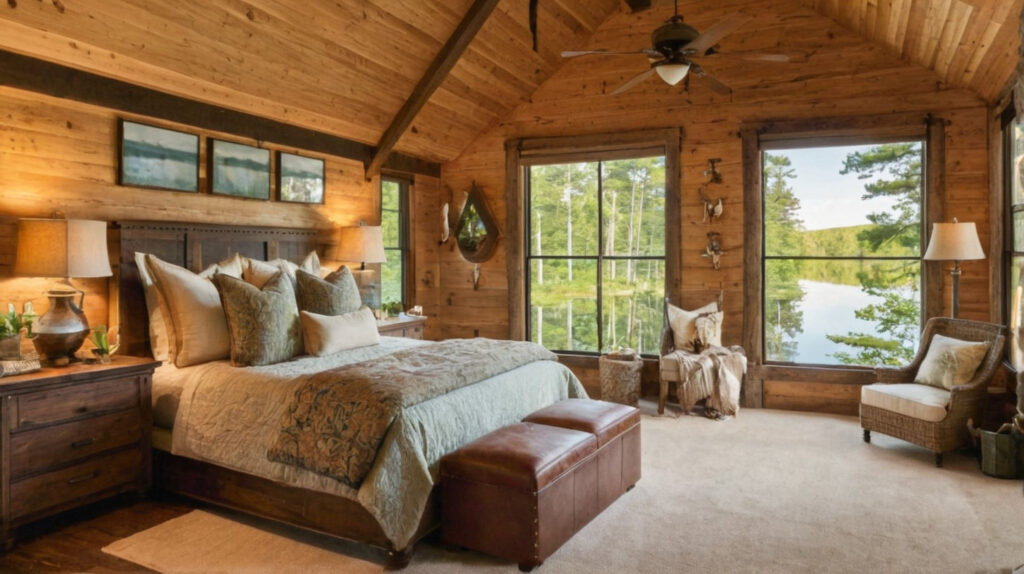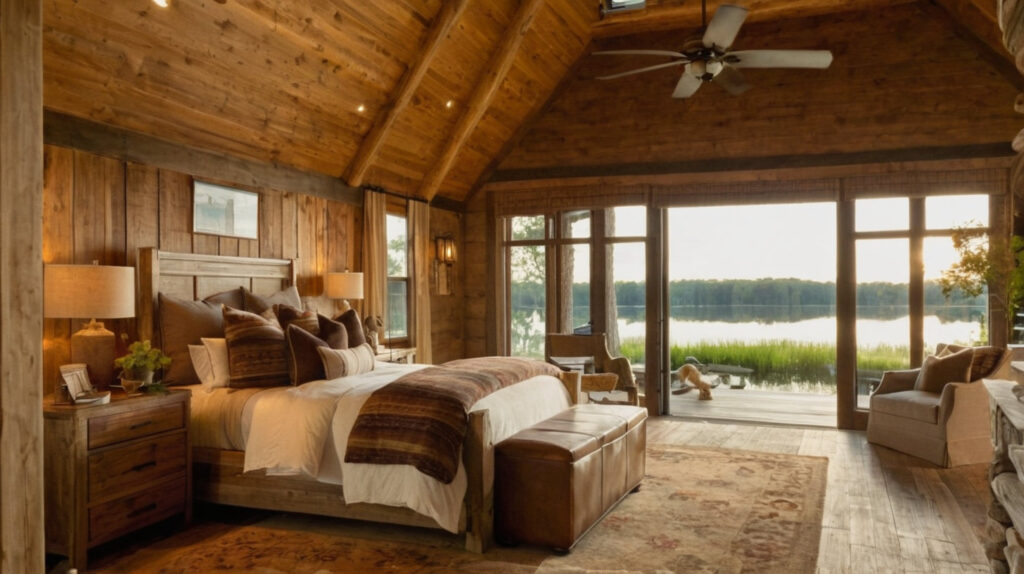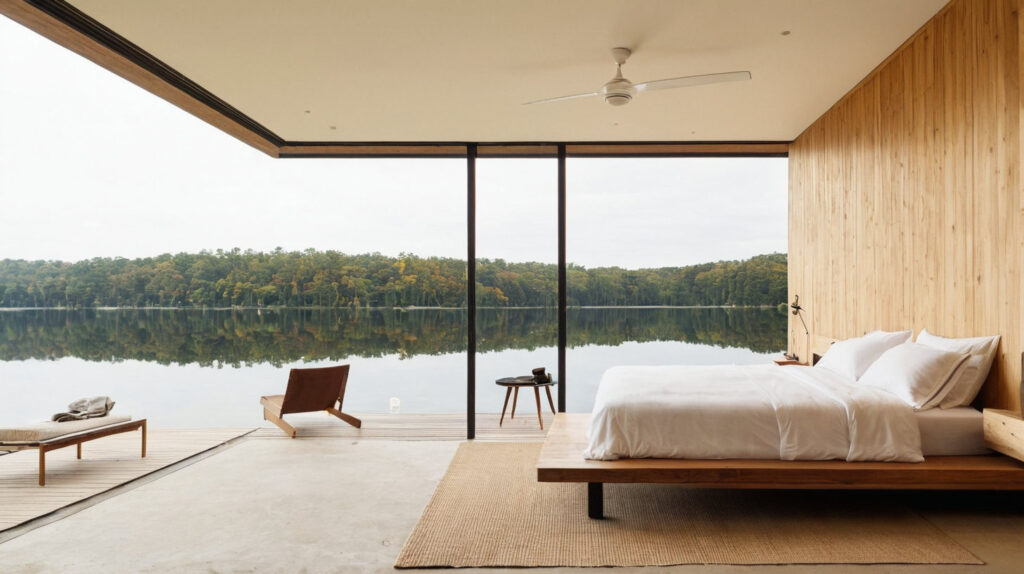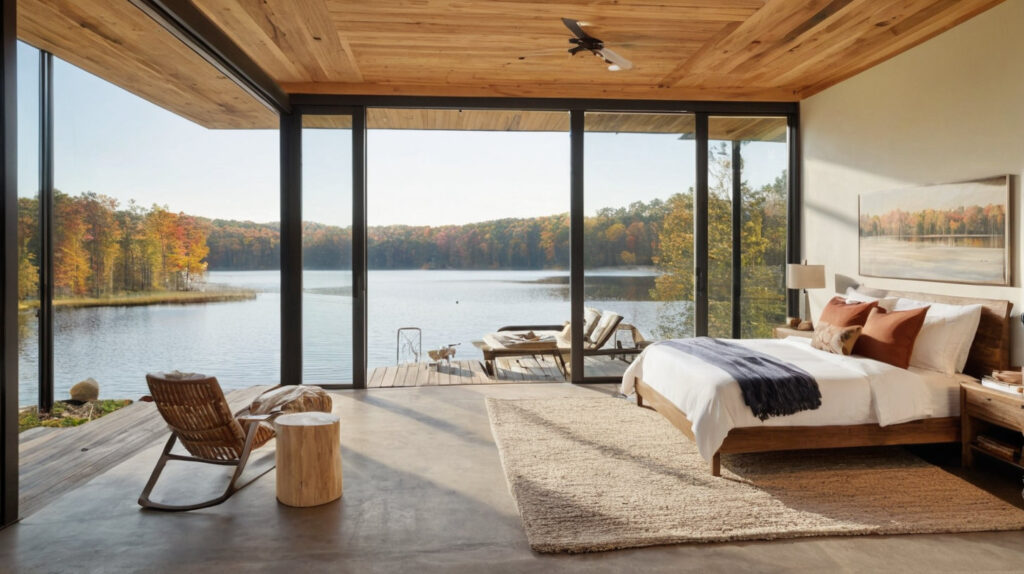Introduction
Picture this: you’ve had a long day, and you’re finally ready to unwind in your bedroom. But where do you sit to kick off your shoes, read a book, or simply relax? Enter the chair for bedroom – a piece of furniture that’s often overlooked but can transform your personal sanctuary. In this article, we’ll explore how a carefully chosen chair can enhance both the comfort and style of your bedroom, making it the perfect retreat you’ve always dreamed of.
Your bedroom is more than just a place to sleep. It’s your personal haven, a space where you can truly be yourself and recharge. While we often focus on the bed, nightstands, and dressers, a well-chosen chair can be the missing piece that elevates your bedroom from functional to fabulous.
Imagine having a cozy spot to curl up with your favorite novel, a comfortable perch to put on your shoes in the morning, or a stylish seat where you can sit and plan your day. A chair for bedroom offers all these possibilities and more. It’s not just about adding seating; it’s about creating a multi-functional space that caters to all aspects of your life.
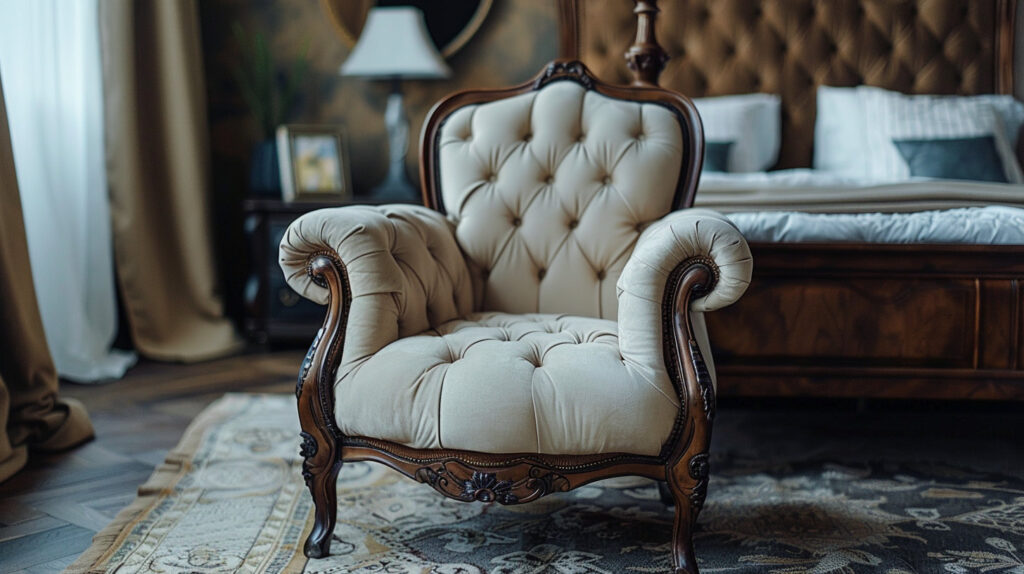
But why is a bedroom chair so important? Let’s break it down:
- Functionality: A chair provides a practical seating option for various activities. Whether you’re getting dressed, working on your laptop, or just need a spot to toss your clothes (we’ve all been there), a chair serves multiple purposes.
- Comfort: Your bedroom should be the most comfortable room in your house. A plush, inviting chair gives you another option for relaxation beyond your bed.
- Style: The right chair can be a statement piece, tying your room’s decor together or adding a pop of personality to your space.
- Versatility: Unlike other bedroom furniture that serves a single purpose, a chair can adapt to your needs throughout the day.
- Value: Adding a chair to your bedroom increases the room’s utility without requiring a major renovation or a huge investment.
When choosing a chair for your bedroom, it’s important to consider both form and function. You want a piece that not only looks great but also serves your specific needs. Do you need extra storage? Look for a chair with built-in compartments. Love to read? A chair with good back support and armrests might be your best bet. Work from home? Consider an ergonomic option that can double as an office chair.
The style of your chair should complement your existing decor while also reflecting your personal taste. Are you a fan of mid-century modern design? A sleek, low-profile chair could be perfect. Prefer a more traditional look? A wingback chair might be just the thing. The options are endless, from minimalist Scandinavian designs to opulent, tufted armchairs.
Material choice is another crucial factor. Fabric chairs offer comfort and come in a wide variety of colors and patterns, making them easy to match with your decor. Leather chairs bring a touch of luxury and are easy to clean, perfect for those who prize low maintenance. For a natural look, wooden chairs can add warmth and character to your space.
Size matters too, especially in bedrooms where space might be at a premium. A bulky recliner might be your dream chair, but if it overwhelms your room, it’s not the right choice. Measure your space carefully and consider the chair’s proportions in relation to your other furniture.
Remember, a chair for bedroom isn’t just about practicality – it’s about creating a space that truly feels like you. It’s an opportunity to express your style, indulge in comfort, and make your bedroom work harder for you. Whether you’re an avid reader, a movie buff, or someone who just appreciates a good place to sit and contemplate life, the right chair can make all the difference.
So, as you consider updating your bedroom, don’t overlook the power of a well-chosen chair. It might just be the element that transforms your space from a simple sleeping area into your favorite room in the house. After all, you deserve a bedroom that’s not just a place to rest your head, but a true reflection of your lifestyle and tastes. And sometimes, all it takes is the perfect chair to make that happen.
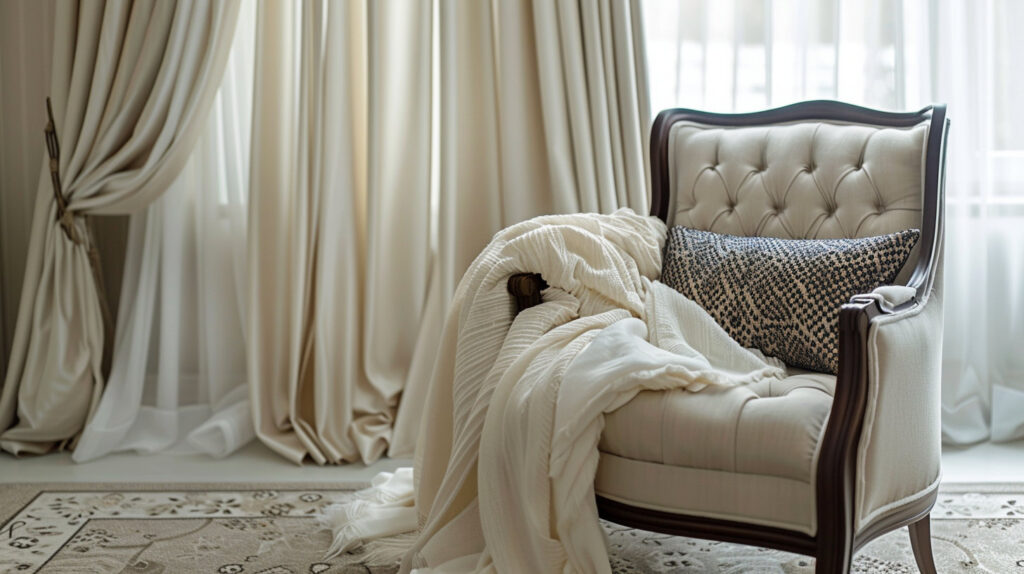
Key Takeaways
– A chair for bedroom enhances both comfort and decor, creating a multi-functional space.
– Various styles and types are available to suit different preferences and needs.
– Choosing the right material and size for your bedroom chair is crucial for both aesthetics and practicality.
The Importance of a Chair for Bedroom
Have you ever considered why your bedroom might feel incomplete? It’s not just about the bed or the wardrobe – it’s about creating a space that caters to all your needs. A chair for bedroom plays a vital role in transforming your sleeping quarters into a multi-functional personal haven.
Think about those moments when you need a spot to sit while you’re getting ready, or when you want to curl up with a good book without messing up your perfectly made bed. That’s where a bedroom chair comes in handy. It’s not just a piece of furniture; it’s a gateway to comfort and functionality in your most private space.
Moreover, a well-chosen chair can serve as a focal point, tying your bedroom decor together. It’s like the cherry on top of your interior design sundae – the finishing touch that makes everything feel complete and purposeful.
But the importance of a chair for bedroom goes beyond mere aesthetics and convenience. It’s about creating a space within a space, a little oasis where you can retreat when you need a moment to yourself. In our fast-paced world, having a dedicated spot for relaxation and reflection is more crucial than ever.
Consider the psychology of space. When you enter your bedroom and see a inviting chair, it sends a signal to your brain that it’s time to slow down and unwind. It’s a visual cue that triggers a relaxation response, helping you transition from the stresses of the day to a more peaceful state of mind.
A bedroom chair also adds versatility to your space. It can transform a corner of your room into a reading nook, a spot for your morning meditation, or even a mini home office. This flexibility is particularly valuable in smaller homes or apartments where space is at a premium. By adding a chair, you’re essentially creating a multi-purpose room within your bedroom.
Let’s not forget the practical benefits. A chair provides a convenient spot to lay out your clothes for the next day, saving you time and reducing morning stress. It’s a place to sit while you put on shoes or apply lotion after a shower. For those who share a bedroom, a chair can offer a quiet spot to sit without disturbing a sleeping partner.
From a design perspective, a chair for bedroom offers an opportunity to express your personal style. It can be a statement piece that reflects your personality or a subtle addition that complements your existing decor. Either way, it’s a chance to add depth and character to your bedroom’s overall aesthetic.
Additionally, a bedroom chair can be a great investment in your home’s value. When it comes time to sell, potential buyers often look for bedrooms that offer more than just sleeping space. A well-staged bedroom with a stylish and functional chair can make a lasting impression.
For those who work from home, a bedroom chair can be a game-changer. It provides an alternative workspace when you need a change of scenery from your main home office. This can boost productivity and help maintain a better work-life balance by allowing you to physically separate your work area from your sleep space.
Lastly, let’s consider the comfort factor. While your bed is undoubtedly comfortable, sometimes you want to relax without fully reclining. A chair offers that middle ground – a place to sit upright or lounge that isn’t your bed. This can be particularly beneficial for those who suffer from acid reflux or other conditions that make lying flat uncomfortable.
In essence, a chair for bedroom is more than just an extra seating option. It’s a versatile piece of furniture that enhances comfort, adds functionality, expresses personal style, and contributes to your overall well-being. Whether you’re reading, relaxing, working, or simply enjoying a quiet moment, a well-chosen bedroom chair can significantly enhance your daily life and the enjoyment of your personal space.
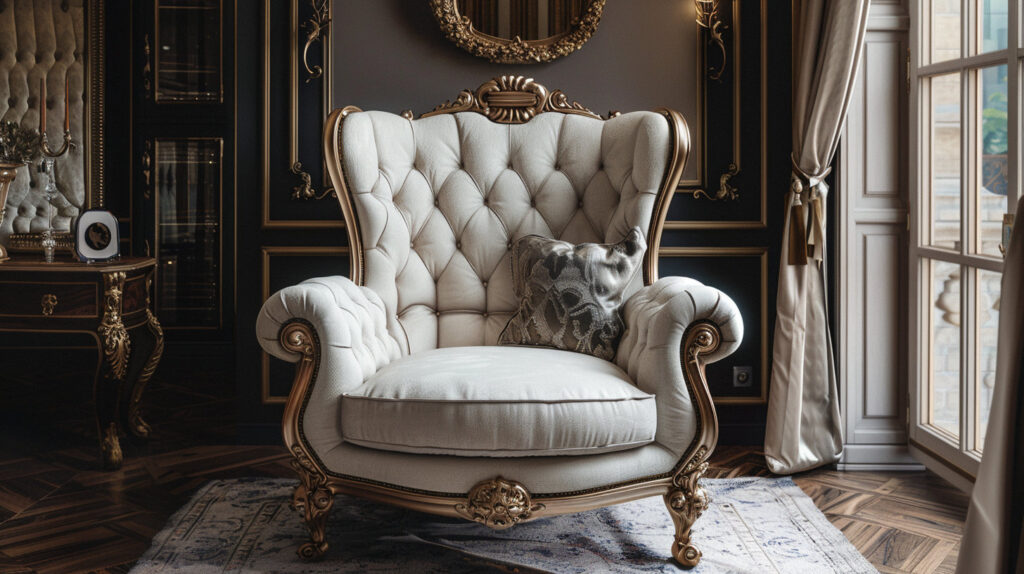
Types of Chairs for Bedroom
When it comes to selecting a chair for bedroom, you’re spoiled for choice. Let’s break down some popular options:
Armchairs: The All-Rounders
Armchairs are the Swiss Army knives of bedroom seating. They offer a perfect blend of comfort and style, with padded seats and supportive arms. Imagine sinking into a plush armchair after a long day – sounds heavenly, doesn’t it? These chairs are versatile enough to complement both modern and traditional bedroom designs.
When it comes to choosing a chair for bedroom, armchairs stand out as true all-rounders. Their design, which typically includes a comfortable seat, a supportive back, and arms to rest on, makes them ideal for a variety of uses. Whether you’re looking for a spot to read, a place to put on your shoes, or simply a cozy nook to relax, an armchair can meet all these needs and more.
One of the key advantages of armchairs is their adaptability to different bedroom styles. In a contemporary setting, a sleek leather armchair with clean lines can add a touch of sophistication. For a more traditional bedroom, a tufted fabric armchair with rolled arms can bring in a sense of classic elegance. This versatility means you’re likely to find an armchair that not only suits your comfort needs but also complements your existing decor.
Comfort is where armchairs truly shine. The padded seat and back provide excellent support for extended periods of sitting, making them perfect for those who love to curl up with a good book or binge-watch their favorite shows. The arms offer additional support and a place to rest your elbows, enhancing overall comfort.
When selecting an armchair for your bedroom, consider the size of your space. Armchairs come in various dimensions, from compact designs perfect for smaller bedrooms to oversized, luxurious options for larger spaces. If you’re tight on space, look for armchairs with a smaller footprint but don’t compromise on the seat depth – you want to ensure it’s still comfortable for lounging.
Material choice is another important factor. Fabric armchairs offer warmth and comfort, and come in a wide range of colors and patterns to match your decor. Leather armchairs, on the other hand, bring a touch of luxury and are easier to clean, making them a practical choice for many.
Consider the functionality you need from your armchair. Some come with additional features like swivel bases, perfect for those who want flexibility in their seating position. Others might include built-in recline functions, ideal if you plan to use the chair for afternoon naps or late-night reading sessions.
Don’t forget about the importance of proper support. Look for armchairs with good lumbar support if you plan to spend extended periods sitting in them. The height of the chair back is also crucial – a high back provides more support and can create a cozy, enveloping feeling.
Armchairs can also serve as statement pieces in your bedroom. A boldly patterned or vibrantly colored armchair can become a focal point, adding personality and flair to your space. Alternatively, a more subdued design can blend seamlessly with your existing decor, providing function without drawing too much attention.
For those who love to accessorize, armchairs offer plenty of opportunities. Add a throw pillow for extra lower back support or a pop of contrasting color. Drape a soft blanket over one arm for those chilly evenings. Place a small side table next to your armchair to create a perfect spot for your book, glasses, or a cup of tea.
In essence, armchairs are the jack-of-all-trades in the world of bedroom seating. They offer comfort, style, and versatility, making them an excellent choice for anyone looking to add both functionality and aesthetic appeal to their bedroom. Whether you’re creating a reading nook, a relaxation station, or simply want a comfortable place to sit while you prepare for your day, an armchair could be the perfect solution. With their ability to adapt to various styles and needs, armchairs truly earn their title as the all-rounders of bedroom chairs.
Recliners: The Ultimate Relaxation Stations
If comfort is your top priority, look no further than a recliner. These chairs are like having a mini spa in your bedroom. With adjustable positions, you can find the perfect angle for reading, watching TV, or even taking a quick nap. Just be careful – you might never want to leave!
When it comes to ultimate relaxation in a chair for bedroom, recliners take the crown. These versatile pieces of furniture offer a level of comfort that’s hard to match, transforming your bedroom into a personal oasis of relaxation. Let’s dive deeper into why recliners are becoming increasingly popular choices for bedroom seating.
First and foremost, the adjustability of recliners is their standout feature. Unlike standard chairs, recliners allow you to change your position with ease. Whether you want to sit upright, lean back slightly, or lie almost flat, a recliner can accommodate your preferences. This flexibility is particularly beneficial in a bedroom setting, where you might want to transition from reading a book to watching TV to taking a nap, all without changing seats.
The ergonomic benefits of recliners shouldn’t be overlooked. Many models are designed with lumbar support and adjustable headrests, providing crucial support for your back and neck. This can be especially beneficial for those who suffer from back pain or need extra support while relaxing. Some high-end recliners even come with built-in massage features, truly bringing the spa experience into your bedroom.
Recliners come in various styles to suit different bedroom aesthetics. While traditionally associated with bulky, overstuffed designs, modern recliners can be sleek and compact, fitting seamlessly into contemporary bedroom decor. From leather-clad models that exude luxury to fabric-covered options that blend with softer bedroom palettes, there’s a recliner to match every style preference.
For those with limited mobility, a recliner in the bedroom can be a game-changer. Power recliners, which operate at the touch of a button, make it easy to get in and out of the chair. This can be particularly useful for elderly individuals or those recovering from surgery, providing a comfortable seating option that doesn’t require much physical effort to adjust.
Consider the multi-functionality of a recliner in your bedroom. Beyond just a place to sit, it can serve as a comfortable spot for reading, a cozy nook for watching TV, or even an alternative sleeping option for those nights when lying flat in bed isn’t comfortable. Some recliners even come with built-in USB ports, allowing you to charge your devices while you relax.
However, it’s important to consider space when opting for a recliner. These chairs typically require more room than standard armchairs, especially when fully reclined. Measure your space carefully and consider the recliner’s dimensions in both upright and reclined positions. Some models are designed for small spaces, offering a wall-hugging feature that allows you to place them closer to the wall while still being able to recline fully.
The material of your recliner is another crucial consideration. Leather recliners offer a luxurious look and are easy to clean, making them a popular choice for bedrooms. Fabric recliners, on the other hand, come in a wider range of colors and patterns and can feel softer and cozier.
For those who run hot while sleeping, look for recliners with breathable fabrics or cooling features. Some high-end models even offer temperature control, ensuring you stay comfortable regardless of the season.
While recliners offer unparalleled comfort, it’s worth noting that they might not be the best choice if you’re looking for a chair primarily for decorative purposes or occasional seating. Their size and casual nature might not suit every bedroom style, particularly more formal or minimalist designs.
In conclusion, if comfort is your main priority for a chair for bedroom, a recliner is hard to beat. These versatile chairs offer adjustability, ergonomic support, and a level of relaxation that can transform your bedroom into a personal retreat. Just remember to consider your space, style preferences, and specific needs when choosing the perfect recliner for your bedroom. With the right choice, you’ll have a comfortable spot that might just become your favorite place in the entire house.
Accent Chairs: The Style Mavens
For those who want to make a statement, accent chairs are your go-to option. These chairs come in bold colors and unique designs, perfect for adding a pop of personality to your bedroom. An accent chair can turn a dull corner into an Instagram-worthy spot in no time.
When it comes to choosing a chair for bedroom that serves as both a functional piece and a style statement, accent chairs are hard to beat. These versatile furnishings are designed to stand out, offering a perfect blend of form and function that can elevate your bedroom’s aesthetic to new heights.
Accent chairs are all about personality. They come in a wide array of styles, from sleek mid-century modern designs to ornate, vintage-inspired pieces. This variety means you can find an accent chair that not only complements your existing decor but also adds an extra layer of visual interest to your space. Whether you prefer bold geometrics, soft florals, or striking solid colors, there’s an accent chair out there that can express your unique style.
One of the key advantages of accent chairs is their ability to introduce color into your bedroom. If your room feels a bit monotonous, an accent chair in a vibrant hue can be the perfect solution. For instance, a mustard yellow chair can add a sunny pop to a neutral gray and white bedroom, while a deep emerald green chair can bring a touch of sophistication to a room with warm, earthy tones.
Beyond color, accent chairs offer an opportunity to play with texture and pattern. Consider a velvet chair for a touch of luxury, or a chair upholstered in a bold print to add visual excitement. Mixing textures and patterns through your accent chair can add depth and dimension to your bedroom, making it feel more layered and intentionally designed.
The shape of an accent chair can also make a significant impact on your bedroom’s overall look. A chair with a unique silhouette, like a curved barrel chair or a sculptural papasan chair, can serve as a focal point in your room. These eye-catching shapes can transform a plain corner into an interesting vignette, perfect for those Instagram-worthy shots.
While style is a primary consideration with accent chairs, don’t forget about comfort. After all, a chair for bedroom should be inviting to sit in, not just to look at. Look for chairs with supportive backs and comfortable seats. Many accent chairs come with plush cushions that offer both style and comfort, making them perfect for reading or relaxing.
Placement is key when it comes to accent chairs. A common spot is in a corner of the bedroom, perhaps paired with a small side table and a floor lamp to create a cozy reading nook. Alternatively, you could place an accent chair near a window to create a peaceful spot for contemplation. In larger bedrooms, a pair of matching accent chairs can create a stylish seating area.
Consider the scale of your accent chair in relation to your bedroom size and other furniture. A large, overstuffed chair might overwhelm a small bedroom, while a delicate, leggy chair might look lost in a spacious room. The goal is to choose a chair that fits proportionally with your space and existing furnishings.
Accent chairs also offer practical benefits beyond their aesthetic appeal. They provide extra seating in your bedroom, which can be particularly useful when you’re getting ready in the morning or need a spot to lay out clothes. Some accent chairs even come with built-in storage, offering a stylish solution for keeping extra blankets or pillows close at hand.
For those who love to change up their decor frequently, accent chairs are a great option. They’re typically easier to move and replace than larger pieces of furniture, allowing you to update your bedroom’s look without a major overhaul. You can even consider having multiple accent chairs that you rotate seasonally to keep your bedroom feeling fresh and current.
In conclusion, accent chairs are the perfect choice for those looking to add a dash of style and personality to their bedroom. These versatile pieces can serve as a focal point, introduce color and texture, and provide functional seating all at once. Whether you opt for a bold, statement-making design or a more subtle, elegant piece, an accent chair can transform your bedroom from ordinary to extraordinary. Just remember to balance style with comfort, consider the scale and placement carefully, and most importantly, choose a chair that reflects your personal taste and makes you smile every time you enter your bedroom.
Lounge Chairs: The Reader’s Paradise
Bookworms, rejoice! Lounge chairs are designed with extended comfort in mind. With their elongated form, they provide the perfect spot for losing yourself in a novel or catching up on your favorite magazines. Add a small side table and a reading lamp, and you’ve got yourself a cozy reading nook.
When it comes to selecting the ideal chair for bedroom reading, lounge chairs stand out as the crème de la crème. These elongated beauties are specifically crafted to support your body in a semi-reclined position, allowing you to immerse yourself in your favorite books for hours on end without discomfort.
The key feature of lounge chairs is their ergonomic design. Unlike standard chairs, lounge chairs typically have a longer seat and a slightly reclined back, which allows you to stretch out your legs and find your perfect reading position. This design helps reduce pressure on your lower back and promotes better posture, making it possible to enjoy marathon reading sessions without the aches and pains that often come from sitting in one position for too long.
Many lounge chairs come with adjustable features, allowing you to customize your seating position. Some models offer multiple reclining angles, while others have adjustable headrests or footrests. This flexibility means you can easily switch between sitting upright for more intense reading and reclining further back when you want to relax with a lighter novel.
The arms of a lounge chair are another crucial element. They’re usually designed to be at the perfect height for resting your elbows while holding a book or e-reader. Some models even feature wide, flat armrests that can double as a surface for your coffee mug or reading glasses.
When it comes to materials, lounge chairs offer a variety of options to suit different preferences. Leather lounge chairs exude luxury and are easy to clean, making them a practical choice for avid readers who might occasionally snack while reading. Fabric-upholstered lounge chairs, on the other hand, can be cozier and come in a wider range of colors and patterns to match your bedroom decor.
Consider the size of your lounge chair in relation to your bedroom space. While these chairs are designed for comfort, they can be quite large. Measure your available space carefully before making a purchase. If you’re working with a smaller bedroom, look for compact lounge chair designs that offer the same comfort in a more space-efficient package.
To create the ultimate reading nook with your lounge chair, consider its placement carefully. A corner near a window is ideal, providing natural light during the day. Pair your chair with a small side table to keep your current reads, a pair of reading glasses, or a refreshing drink within easy reach. Don’t forget about lighting – a well-positioned floor lamp or wall-mounted reading light can make all the difference when you’re reading late into the night.
For those who love to switch up their reading positions, consider a lounge chair with a matching ottoman. This allows you to prop up your feet when you want to, adding another level of comfort to your reading experience.
Some lounge chairs come with built-in features that can enhance your reading experience. Look for models with integrated book holders or tablet stands if you frequently switch between physical books and e-readers. Some high-end models even come with heated seats or massage functions – perfect for those chilly evenings or when you need to relax after a long day.
While comfort is paramount, don’t forget about style. Lounge chairs come in a variety of designs, from sleek and modern to plush and traditional. Choose a style that complements your bedroom decor while still prioritizing comfort. A lounge chair can be a statement piece in your bedroom, so don’t be afraid to choose one that reflects your personal style.
For those who share a bedroom, a lounge chair can provide a personal space within the shared room. It offers a spot to retreat to when you want some quiet time, without having to leave the bedroom entirely.
In conclusion, if you’re a book lover looking for the perfect chair for bedroom reading, a lounge chair should be at the top of your list. Its ergonomic design, comfort-focused features, and versatility make it an ideal choice for creating a cozy reading nook in your personal space. Whether you’re diving into an epic novel, flipping through magazines, or simply want a comfortable spot to relax, a well-chosen lounge chair can transform your bedroom into a reader’s paradise. Just remember to balance comfort with style, consider your space constraints, and think about any additional features that might enhance your reading experience. With the right lounge chair, you’ll have a dedicated spot for literary adventures right in the comfort of your own bedroom.
Choosing the Right Style
Now that we’ve covered the types, let’s talk about finding a style that suits your bedroom. It’s like finding the right dance partner – the chair should complement your room’s rhythm, not step on its toes.
Matching the Chair Style with Bedroom Decor
Take a good look at your bedroom. What’s the vibe? Is it sleek and modern, or cozy and traditional? Your chair should speak the same design language as the rest of your room. A mid-century modern chair might look out of place in a rustic farmhouse-style bedroom, just as an overstuffed traditional armchair might clash with a minimalist space.
When selecting a chair for bedroom, it’s crucial to consider how it will harmonize with your existing decor. The right chair can tie your whole room together, while a mismatched piece can disrupt the overall aesthetic you’ve worked hard to create. Let’s dive deeper into how to match your chair style with different bedroom decors:
Modern and Minimalist Bedrooms: If your bedroom boasts clean lines, a neutral color palette, and a clutter-free aesthetic, you’ll want to choose a chair that complements this style. Look for chairs with sleek profiles, such as:
- Eames-style lounge chairs
- Scandinavian-inspired pieces with light wood frames and simple upholstery
- Molded plastic or fiberglass chairs in solid colors
- Low-profile armchairs with thin metal legs
Avoid ornate details or overly plush designs that could clash with the minimalist vibe. Instead, opt for chairs that embody the “form follows function” philosophy.
Traditional and Classic Bedrooms: For bedrooms with a more traditional feel, characterized by rich wood tones, ornate details, and classic patterns, consider chairs that echo these elements:
- Wing-back chairs with tufted upholstery
- Bergère chairs with carved wood frames
- Queen Anne style chairs with cabriole legs
- Chesterfield armchairs with deep button tufting
These styles often feature more substantial profiles and luxurious fabrics like velvet or brocade, which can add to the classic, timeless feel of your bedroom.
Rustic or Farmhouse-Style Bedrooms: If your bedroom has a cozy, rustic charm with natural textures and a lived-in feel, look for chairs that complement this aesthetic:
- Adirondack-style chairs (for larger bedrooms)
- Woven rattan or wicker chairs
- Distressed leather armchairs
- Wooden rocking chairs
These styles often incorporate natural materials and finishes that align well with the rustic vibe. Look for chairs with visible wood grain or slightly weathered finishes to enhance the farmhouse feel.
Bohemian or Eclectic Bedrooms: For bedrooms that embrace a free-spirited, mix-and-match approach, you have more flexibility in chair selection. Consider:
- Papasan chairs
- Moroccan poufs or floor cushions
- Hanging egg chairs
- Uniquely shaped accent chairs in bold colors or patterns
In bohemian spaces, don’t be afraid to choose a chair that stands out. This style thrives on unexpected combinations and personal expression.
Contemporary Bedrooms: For bedrooms that blend modern and traditional elements in a current, fresh way, look for chairs that strike a balance between classic and trendy:
- Mid-century modern inspired pieces
- Barrel chairs in contemporary fabrics
- Sleek recliners with subtle curves
- Accent chairs with interesting textures or materials
The key here is to find pieces that feel current without being too trend-driven, ensuring your chair won’t look dated in a few years.
Regardless of your bedroom’s style, consider these universal tips when matching your chair:
- Color Coordination: Your chair doesn’t need to match your bedroom colors exactly, but it should complement them. Consider pulling a secondary color from your bedding or curtains for your chair upholstery.
- Scale and Proportion: Ensure your chair fits well with the size of your room and other furniture. A large, overstuffed chair might overwhelm a small bedroom, while a petite accent chair might look out of place in a spacious master suite.
- Material Harmony: Consider the dominant materials in your bedroom. If you have a lot of wood furniture, a chair with wooden elements might blend well. In a room with mostly upholstered pieces, a fully upholstered chair might be more cohesive.
- Functional Needs: While style is important, don’t forget about comfort and functionality. A beautiful chair that’s uncomfortable to sit in won’t serve its purpose in your bedroom.
- Personal Touch: Remember, your bedroom is your personal space. While matching styles is important, don’t be afraid to choose a chair that speaks to your individual taste and needs.
By carefully considering your bedroom’s existing style and following these guidelines, you can select a chair that not only serves its functional purpose but also enhances your bedroom’s overall aesthetic. The right chair for bedroom can become more than just a piece of furniture – it can be the finishing touch that pulls your entire room together, creating a cohesive and inviting space that truly feels like home.
Contemporary vs. Traditional Styles
If your bedroom leans towards contemporary design, consider chairs with clean lines, neutral colors, or unexpected materials like lucite or molded plastic. For a traditional bedroom, look for chairs with classic silhouettes, rich fabrics, and perhaps some wood detailing.
Choosing between contemporary and traditional styles for your chair for bedroom is more than just a matter of personal preference. It’s about creating a cohesive look that enhances your bedroom’s overall aesthetic. Let’s dive deeper into these two distinct styles and how they can influence your chair selection:
Contemporary Style:
Contemporary design is all about the here and now. It’s characterized by clean lines, minimalism, and a focus on function. When choosing a contemporary chair for your bedroom, consider the following:
- Shape: Look for chairs with sleek, geometric shapes. Avoid ornate details or excessive curves. A chair with a simple, streamlined silhouette will fit perfectly in a contemporary setting.
- Materials: Contemporary design often incorporates modern or unexpected materials. Consider chairs made of:
- Molded plastic or fiberglass
- Lucite or acrylic
- Polished metal
- Engineered wood
- Colors: While contemporary design can incorporate bold colors, it often leans towards a neutral palette. Consider chairs in:
- White, black, or gray
- Earth tones
- Monochromatic color schemes
- Texture: Contemporary chairs often play with texture to add interest without compromising the clean aesthetic. Look for:
- Smooth, polished surfaces
- Interesting fabric weaves
- Subtle patterns
- Examples of contemporary chairs:
- Eames-style molded chairs
- Barcelona chairs
- Ghost chairs
- Saarinen Tulip chairs
When incorporating a contemporary chair into your bedroom, consider pairing it with other modern elements like geometric patterns, abstract art, or minimalist decor.
Traditional Style:
Traditional design draws inspiration from the 18th and 19th centuries, focusing on comfort, warmth, and timeless elegance. When selecting a traditional chair for your bedroom, keep these points in mind:
- Shape: Traditional chairs often feature curvy silhouettes and ornate details. Look for:
- Wing-back chairs
- Bergère chairs
- Queen Anne style chairs
- Chesterfield armchairs
- Materials: Traditional chairs typically use natural materials and rich fabrics. Consider:
- Solid wood frames (mahogany, cherry, walnut)
- Upholstery in velvet, silk, or brocade
- Leather (particularly for libraries or studies)
- Colors: Traditional color palettes tend to be warm and rich. Look for chairs in:
- Deep reds, blues, or greens
- Warm neutrals like beige or taupe
- Rich wood tones
- Texture: Texture in traditional chairs often comes from the upholstery and wood finishes. Consider:
- Tufted or quilted upholstery
- Carved wood details
- Nailhead trim
- Examples of traditional chairs:
- Wingback chairs with floral upholstery
- Tufted leather club chairs
- Carved wood armchairs with plush cushions
- Rolled-arm accent chairs
To complement a traditional chair in your bedroom, consider pairing it with classic elements like floral patterns, antique-style lamps, or rich wood furniture.
Bridging the Gap:
While contemporary and traditional styles are distinct, there’s room for mixing elements to create a unique look. Here are some ways to blend these styles:
- Transitional Style: This style combines the comfort and warmth of traditional design with the clean profiles of contemporary style. A transitional chair might have a classic shape but be upholstered in a modern fabric or color.
- Updated Classics: Look for chairs that take traditional shapes and update them with contemporary materials or colors. For example, a wingback chair in a bold, solid color or a Chesterfield sofa in white leather.
- Mix and Match: Don’t be afraid to place a contemporary chair in a traditional room (or vice versa) as an accent piece. This can create an interesting focal point and add personality to your space.
- Focus on Function: Regardless of style, ensure your chair for bedroom serves its intended purpose. A comfortable, well-made chair can bridge style gaps through its functionality.
Remember, the goal is to create a bedroom that feels cohesive and personal to you. Whether you choose a contemporary chair with sleek lines and modern materials, or a traditional piece with classic elegance, make sure it contributes to making your bedroom a space where you feel comfortable and at home.
Ultimately, the chair you choose should not only match your bedroom’s style but also reflect your personal taste and meet your functional needs. Whether you’re creating a reading nook, a spot for morning coffee, or simply adding extra seating to your room, the right chair can elevate your bedroom from a simple sleeping space to a personalized retreat.
The Importance of Aesthetics
Remember, your bedroom chair isn’t just for sitting – it’s a part of your room’s visual story. Choose a chair that not only feels good but also looks good. It should be a piece that makes you smile every time you walk into the room.
When selecting a chair for bedroom, the importance of aesthetics cannot be overstated. Your bedroom is your personal sanctuary, a space that should reflect your taste and personality while providing comfort and relaxation. The right chair can serve as a beautiful focal point, tying together your room’s design elements and elevating the overall ambiance.
Let’s delve deeper into why aesthetics matter when choosing a bedroom chair:
- Visual Impact: A well-chosen chair can dramatically transform the look of your bedroom. It can:
- Add a pop of color to a neutral space
- Introduce an interesting texture or pattern
- Create balance in the room’s composition
- Serve as a statement piece that draws the eye
For example, a vibrant velvet armchair in a soft gray bedroom can instantly add warmth and visual interest. Or, a sleek leather lounger in a bohemian-style room can provide an unexpected contrast that makes the space more dynamic.
- Emotional Response: The aesthetics of your chair can influence your mood and emotions. A chair that you find visually pleasing can:
- Evoke feelings of comfort and relaxation
- Boost your mood when you enter the room
- Inspire creativity or contemplation
- Make you feel proud of your space
Imagine walking into your bedroom after a long day and seeing a beautiful, inviting chair in the corner. The mere sight of it can help you start to unwind and transition into relaxation mode.
- Personal Expression: Your chair is an opportunity to express your personal style. Whether you prefer:
- Minimalist and modern
- Plush and traditional
- Eclectic and unique
- Rustic and cozy
Your choice of chair can say a lot about who you are and what you value in your personal space.
- Cohesive Design: While a chair can be a standout piece, it should also work harmoniously with your existing decor. Consider how the chair’s aesthetics complement:
- Your color scheme
- Other furniture pieces
- Textiles in the room (curtains, bedding, rugs)
- Wall art and decorative accessories
A chair that ties in with these elements creates a cohesive, well-thought-out look.
- Versatility: A chair with strong aesthetic appeal can be more than just seating. It can serve as:
- A decorative element when not in use
- A backdrop for photos or social media posts
- Part of a cozy reading nook or vanity area
- An heirloom piece to be passed down
- Investment Value: While comfort is crucial, a chair that’s aesthetically pleasing often holds its value better. If you ever decide to redecorate or move, a beautiful chair is:
- More likely to fit into new decor schemes
- Potentially resalable if your needs change
- A piece you’ll want to keep and use for years to come
- Daily Enjoyment: Perhaps most importantly, a chair you find beautiful will bring you joy every day. It’s not just about impressing guests or creating a picture-perfect room – it’s about creating a space that you love spending time in.
When considering the aesthetics of your chair for bedroom, keep these tips in mind:
- Consider the chair as part of the overall room composition. How does it balance with other furniture pieces?
- Think about scale. A large, overstuffed chair might overwhelm a small room, while a delicate accent chair might get lost in a spacious master bedroom.
- Don’t be afraid of color or pattern, but ensure it complements your existing decor.
- Consider the chair’s lines and how they relate to other elements in the room. Do you want to echo existing shapes or provide contrast?
- Think about lighting. How will the chair look in different light conditions? Will it catch the morning sun or be softly illuminated by a bedside lamp in the evening?
- Trust your instincts. If a chair speaks to you aesthetically, it’s likely to bring you joy for years to come.
Remember, the perfect chair for your bedroom marries form and function. It should be comfortable enough to sit in for extended periods, but also beautiful enough to enhance your room’s aesthetic. When you find a chair that checks both these boxes – comfort and visual appeal – you’ve found a piece that will not only serve its purpose but also contribute to the overall beauty and enjoyment of your personal space.
Ultimately, the chair you choose should make you smile every time you enter your bedroom. It should be a piece that you’re proud of, that reflects your personal style, and that contributes to making your bedroom a true retreat. When aesthetics and comfort align, you create a space that’s not just functional, but truly special.
Material Matters
The material of your chair for bedroom isn’t just about looks – it’s about feel, durability, and maintenance too. Let’s break down some popular options:
Fabric Chairs: The Cozy Chameleons
Fabric chairs are like the comfort food of the furniture world. They’re inviting, warm, and come in endless colors and patterns. Plus, they’re great at adapting to different styles. However, keep in mind that they might require more frequent cleaning, especially if you’re prone to snacking in bed.
When it comes to choosing a chair for bedroom, fabric chairs offer a unique blend of comfort, versatility, and style that’s hard to beat. Let’s dive deeper into why fabric chairs are often referred to as the “cozy chameleons” of the furniture world:
Comfort: Fabric chairs are synonymous with comfort. The soft, yielding nature of fabric upholstery makes these chairs incredibly inviting. Here’s why:
- Texture: Fabric chairs can be covered in a variety of textures, from smooth cotton to plush velvet, allowing you to choose the feel that’s most comfortable for you.
- Temperature: Unlike leather, which can feel cold in winter and sticky in summer, fabric tends to maintain a more consistent, comfortable temperature.
- Softness: The inherent softness of fabric makes these chairs perfect for lounging, reading, or just relaxing after a long day.
- Cushioning: Fabric upholstery often allows for more generous padding, creating a chair that you can sink into.
Versatility: Fabric chairs are true chameleons, able to adapt to a wide range of styles and decor themes:
- Color Options: Fabric chairs come in virtually every color imaginable, making it easy to find one that complements your bedroom’s color scheme.
- Patterns: From subtle textures to bold prints, fabric chairs offer endless pattern options to suit your taste.
- Style Flexibility: Whether your bedroom is modern, traditional, rustic, or eclectic, there’s a fabric chair that can fit right in.
- Seasonal Adaptability: You can easily change the look of a fabric chair with throws and pillows, allowing you to update your bedroom’s style with the seasons.
Style: Fabric chairs can be a key element in defining your bedroom’s style:
- Texture Play: The texture of fabric chairs can add depth and interest to your bedroom’s overall look.
- Statement Piece: A boldly patterned or vibrantly colored fabric chair can serve as a focal point in your bedroom.
- Subtle Elegance: Alternatively, a chair in a neutral fabric can provide a soft, sophisticated touch to your space.
- Mix and Match: Fabric chairs allow you to experiment with mixing different textures and patterns in your bedroom decor.
Considerations: While fabric chairs offer many benefits, there are a few things to keep in mind:
- Cleaning: As mentioned, fabric chairs may require more frequent cleaning, especially in a bedroom where you might be eating, applying makeup, or lounging in day clothes.
- Durability: Some fabrics are more prone to wear and tear than others. Consider options like microfiber or treated fabrics for increased durability.
- Allergies: If you’re prone to allergies, be aware that fabric chairs can trap dust and allergens more easily than other materials.
- Fading: Fabric can fade over time, especially if exposed to direct sunlight. Consider this when placing your chair.
Choosing Your Fabric Chair: When selecting a fabric chair for your bedroom, consider:
- Usage: Will this be your primary reading chair? A spot to put on shoes? This can help determine the style and durability you need.
- Room Style: Choose a fabric that complements your existing decor. A sleek, tightly upholstered chair works well in modern rooms, while a softer, more relaxed silhouette suits casual or traditional spaces.
- Maintenance: If you’re concerned about spills or stains, look for fabrics treated with stain-resistant finishes or choose darker colors or patterns that hide marks more easily.
- Comfort Level: Test out different chairs to find the level of cushioning and support that feels best to you.
- Size: Ensure the chair fits well in your space. A oversized armchair might be cozy, but could overwhelm a small bedroom.
Caring for Your Fabric Chair: To keep your fabric chair looking its best:
- Vacuum regularly to remove dust and debris.
- Treat spills immediately to prevent staining.
- Consider professional cleaning once or twice a year.
- Use arm covers or throws on high-use areas to prevent wear.
- Rotate cushions (if possible) to ensure even wear.
In conclusion, fabric chairs offer a wonderful combination of comfort, style, and versatility for your bedroom. Their ability to adapt to different decor styles while providing a cozy spot to relax makes them a popular choice for many. While they may require a bit more maintenance than other materials, the warmth and comfort they bring to your personal space can make it well worth the effort. Whether you’re curling up with a good book, putting on your shoes in the morning, or just need a comfy spot to sit and contemplate, a well-chosen fabric chair can be the perfect addition to your bedroom retreat.
Leather Chairs: The Sophisticated Survivors
Leather chairs bring a touch of luxury to your bedroom. They’re durable, easy to clean, and age beautifully. On the flip side, they can be cool to the touch and might not be the best choice if you’re looking for something to curl up in on chilly nights.
When considering a chair for bedroom, leather options stand out for their elegance, longevity, and practicality. Let’s delve deeper into why leather chairs are often described as “sophisticated survivors” in the world of bedroom furniture:
Sophistication and Style: Leather chairs exude a timeless elegance that can elevate the look of any bedroom:
- Luxurious Appearance: The rich texture and sheen of leather instantly add a touch of luxury to your space.
- Versatility: Leather chairs can complement various decor styles, from traditional to modern and everything in between.
- Color Options: While classic brown and black are popular, leather chairs now come in a wide range of colors to suit different tastes and decor schemes.
- Aging Grace: Unlike many materials that wear out, leather often looks better with age, developing a unique patina that adds character.
Durability and Longevity: Leather chairs are true survivors, built to last:
- Resistant to Wear and Tear: High-quality leather is extremely durable and can withstand daily use without showing significant signs of wear.
- Easy to Clean: Most spills and stains can be easily wiped away, making leather chairs a practical choice for bedrooms.
- Hypoallergenic Properties: Leather doesn’t harbor dust mites or allergens, making it an excellent choice for allergy sufferers.
- Long-term Investment: While initially more expensive, the longevity of leather chairs often makes them a cost-effective choice in the long run.
Comfort Considerations: While leather chairs offer unique comfort benefits, there are some factors to consider:
- Temperature Responsiveness: Leather can feel cool to the touch initially, which might be refreshing in summer but less inviting on cold winter nights.
- Break-in Period: New leather chairs might feel stiff at first but typically soften and conform to your body over time.
- Breathability: Quality leather is somewhat breathable, preventing the sticky feeling associated with some synthetic materials.
- Texture: The smooth surface of leather can be comfortable for bare skin but might not provide the same cozy feel as fabric upholstery.
Maintenance and Care: Leather chairs are relatively low-maintenance, but proper care ensures their longevity:
- Regular Dusting: A quick wipe with a soft, dry cloth helps maintain the leather’s appearance.
- Conditioning: Occasional use of a leather conditioner prevents drying and cracking.
- Prompt Cleaning: While resistant to stains, it’s best to clean spills immediately to prevent potential damage.
- Avoid Direct Sunlight: Prolonged exposure to sunlight can cause fading and drying of the leather.
Choosing Your Leather Chair: When selecting a leather chair for your bedroom, consider:
- Leather Type: Full-grain leather is the highest quality and most durable, while top-grain and bonded leather offer more affordable options.
- Color and Finish: Choose a color that complements your bedroom decor. Remember that lighter colors may show wear more easily.
- Style: From sleek modern designs to classic club chairs, choose a style that fits your bedroom’s aesthetic.
- Size and Proportion: Ensure the chair fits well in your space without overwhelming other furniture pieces.
- Comfort Features: Look for ergonomic designs, adequate padding, and features like reclining capabilities if desired.
Addressing Potential Drawbacks: While leather chairs have many benefits, it’s important to consider potential downsides:
- Initial Cost: Quality leather chairs are often more expensive upfront compared to fabric alternatives.
- Temperature Sensitivity: If the cool touch of leather is a concern, consider placing a throw blanket on the chair for added warmth and texture.
- Limited Texture Options: Unlike fabric, leather doesn’t offer the same variety of textures and patterns.
- Ethical Concerns: For those concerned about animal products, consider faux leather options that mimic the look and feel of genuine leather.
In conclusion, leather chairs offer a sophisticated and durable seating option for your bedroom. Their timeless appeal, ease of maintenance, and longevity make them an excellent investment for those looking to add a touch of luxury to their personal space. While they may not offer the same cozy feel as fabric chairs, their elegance and practicality are hard to beat.
Whether you’re creating a reading nook, a stylish accent piece, or a comfortable spot to start and end your day, a leather chair can be a fantastic addition to your bedroom. Just remember to consider your personal comfort preferences, bedroom style, and maintenance willingness when making your choice. With proper care, a leather chair can be a sophisticated survivor in your bedroom for many years to come, growing more beautiful and comfortable with each passing year.
Wooden Chairs: The Timeless Classics
Wooden chairs offer a timeless appeal that can work in almost any bedroom style. They’re sturdy and can last for generations with proper care. However, for maximum comfort, you might want to add cushions or upholstered seats.
When considering a chair for bedroom, wooden options stand out for their versatility, durability, and classic aesthetic. Let’s explore why wooden chairs are often referred to as “timeless classics” in the world of bedroom furniture:
Timeless Appeal: Wooden chairs have an enduring charm that transcends passing trends:
- Classic Aesthetic: Wood has been used in furniture making for centuries, giving wooden chairs a timeless quality that never goes out of style.
- Versatility: Wooden chairs can complement a wide range of bedroom styles, from rustic and traditional to modern and minimalist.
- Natural Beauty: The unique grain patterns and warm tones of wood add natural beauty and character to your bedroom.
- Customization Potential: Wood can be stained, painted, or left natural to suit your personal taste and bedroom decor.
Durability and Longevity: Wooden chairs are built to last:
- Sturdy Construction: Well-made wooden chairs can withstand daily use for decades, even generations.
- Easy to Repair: Unlike upholstered furniture, minor damages to wooden chairs can often be easily repaired or refinished.
- Age Gracefully: Wood develops a beautiful patina over time, often looking better with age.
- Value Retention: Quality wooden chairs often retain their value, making them a good long-term investment.
Styles and Designs: Wooden chairs come in a variety of styles to suit different bedroom aesthetics:
- Traditional: Think Windsor chairs or ladder-back designs for a classic, homey feel.
- Modern: Sleek, minimalist wooden chairs with clean lines can add a contemporary touch.
- Mid-Century Modern: Iconic designs from this era often feature beautiful woodwork and are currently very popular.
- Rustic: Chairs made from reclaimed wood or with a distressed finish can add warmth and character to a bedroom.
- Scandinavian: Light wood tones and simple, functional designs characterize this popular style.
Comfort Considerations: While wooden chairs are prized for their looks and durability, comfort can be a consideration:
- Adding Cushions: For maximum comfort, consider adding seat cushions or full chair pads.
- Upholstered Options: Many wooden chairs come with upholstered seats, offering a blend of wood’s beauty and fabric’s comfort.
- Ergonomics: Look for designs with supportive backs and comfortable seat angles.
- Size and Proportion: Ensure the chair’s dimensions suit your body type for optimal comfort.
Maintenance and Care: Wooden chairs are relatively easy to maintain:
- Regular Dusting: A quick wipe with a soft, dry cloth helps maintain the wood’s appearance.
- Avoid Moisture: Use coasters under drinks and clean up spills immediately to prevent water damage.
- Periodic Polishing: Occasional use of wood polish can help protect the finish and keep the wood looking its best.
- Refinishing: Over time, wooden chairs can be stripped and refinished to give them a fresh look.
Choosing Your Wooden Chair: When selecting a wooden chair for your bedroom, consider:
- Wood Type: Different woods have different characteristics. Hardwoods like oak, maple, or walnut are durable choices for long-lasting furniture.
- Finish: Choose between natural finishes that showcase the wood’s grain, painted finishes for a pop of color, or distressed finishes for a vintage look.
- Style: Select a chair style that complements your bedroom’s overall aesthetic.
- Comfort Features: If you plan to spend extended time sitting in the chair, look for ergonomic designs or consider adding cushions.
- Size and Proportion: Ensure the chair fits well in your space and is proportionate to your other bedroom furniture.
Addressing Potential Drawbacks: While wooden chairs have many benefits, it’s important to consider potential downsides:
- Comfort: Without cushioning, wooden chairs can be less comfortable for long sitting periods.
- Weight: Solid wood chairs can be heavy, which might be a consideration if you like to rearrange your furniture frequently.
- Noise: Wooden chairs can sometimes creak or make noise, especially as they age.
- Environmental Concerns: If this is important to you, look for chairs made from sustainably sourced wood or reclaimed materials.
Incorporating Wooden Chairs in Your Bedroom: Here are some ideas for using wooden chairs in your bedroom:
- Dressing Table Chair: A wooden chair can add character to your vanity area.
- Reading Nook: Pair a wooden chair with a small side table and lamp for a cozy reading corner.
- Extra Seating: Use a wooden chair as additional seating when needed, and as a decorative piece when not in use.
- Bedside Table Alternative: A wooden chair can double as a unique and functional bedside table.
In conclusion, wooden chairs offer a classic, versatile, and durable seating option for your bedroom. Their timeless appeal allows them to adapt to various decor styles, while their sturdy construction ensures they can be enjoyed for years to come. While they may require some additions for maximum comfort, their beauty, longevity, and ability to age gracefully make them a fantastic choice for those looking to add a touch of timeless elegance to their bedroom.
Whether you’re aiming for a rustic, traditional, or modern look, there’s likely a wooden chair that can complement your style. With proper care and perhaps a cushion or two, a wooden chair can become not just a functional piece of furniture, but a cherished part of your bedroom’s character for generations to come.
Pros and Cons of Different Materials
Let’s dive deeper into the pros and cons of fabric, leather, and wood as materials for bedroom chairs, providing a comprehensive comparison to help you make an informed decision.
Fabric Chairs:
Pros:
- Comfort: Fabric chairs are typically soft and cozy, making them ideal for long periods of sitting.
- Versatility: Available in countless colors, patterns, and textures to match any decor style.
- Warmth: Fabric feels warm to the touch, making it inviting in all seasons.
- Affordability: Generally less expensive than leather options.
- Sound absorption: Fabric can help dampen noise in your bedroom.
Cons:
- Staining: Fabric is prone to staining and can be challenging to clean thoroughly.
- Wear and tear: May show signs of wear more quickly than other materials.
- Allergens: Can harbor dust, pet dander, and other allergens.
- Odor retention: Might absorb and retain odors over time.
- Fading: Can lose color when exposed to direct sunlight.
Leather Chairs:
Pros:
- Durability: High-quality leather can last for decades with proper care.
- Easy maintenance: Most spills can be easily wiped clean.
- Hypoallergenic: Doesn’t harbor dust mites or allergens.
- Aesthetics: Adds a touch of luxury and sophistication to the bedroom.
- Improves with age: Develops a desirable patina over time.
Cons:
- Cost: Generally more expensive than fabric or wood options.
- Temperature sensitivity: Can feel cold in winter and sticky in summer.
- Limited color options: Typically available in fewer colors than fabric.
- Scratching: Can be scratched by pets or sharp objects.
- Ethical concerns: May not align with vegan or animal-friendly lifestyles.
Wooden Chairs:
Pros:
- Durability: Well-made wooden chairs can last for generations.
- Timeless appeal: Classic look that suits various decor styles.
- Easy to clean: Can be wiped down easily.
- Eco-friendly options: Available in sustainable or reclaimed wood.
- Customizable: Can be painted or stained to match your decor.
Cons:
- Comfort: May require additional cushioning for extended comfort.
- Weight: Solid wood chairs can be heavy and difficult to move.
- Maintenance: May require occasional refinishing to maintain appearance.
- Noise: Can creak or make noise, especially as they age.
- Cost: High-quality wooden chairs can be expensive.
Considerations for Choosing:
- Usage: Consider how often and for how long you’ll use the chair. For frequent, extended use, fabric might be most comfortable.
- Maintenance: If easy cleaning is a priority, leather or wood might be preferable.
- Durability: For long-term use, leather or wood could be better investments.
- Budget: Fabric chairs are often the most budget-friendly, while quality leather chairs tend to be the most expensive.
- Allergies: If you have allergies, leather or wood might be better options than fabric.
- Climate: In colder climates, fabric chairs might be more comfortable year-round.
- Aesthetics: Choose a material that complements your bedroom’s style and your personal taste.
- Eco-friendliness: Consider sustainable fabric options, responsibly sourced leather, or reclaimed wood if environmental impact is a concern.
In conclusion, each material has its strengths and weaknesses when it comes to a chair for bedroom. Fabric offers comfort and versatility but requires more maintenance. Leather provides durability and easy cleaning but at a higher cost. Wood offers timeless appeal and longevity but may need additional cushioning for comfort. Your ideal choice will depend on your specific needs, preferences, and bedroom decor. Remember, you can always combine materials, such as a wooden frame with fabric cushions, to get the best of multiple worlds.
Size and Space Considerations
Choosing the right size chair for your bedroom is like playing a game of Tetris – it needs to fit just right without making the room feel cramped.
Measuring Your Space
Before you fall in love with a chair, grab a tape measure. You’ll want to know exactly how much space you have to work with. Don’t forget to account for clearance around the chair so you can move comfortably.
Proper measurement and space planning are crucial when selecting a chair for bedroom. Let’s dive deeper into this process and explore how to choose the right size chair for different bedroom dimensions.
Measuring Your Space:
- Floor Space:
- Measure the length and width of the area where you plan to place the chair.
- Consider traffic flow – ensure there’s enough space to walk around the chair comfortably.
- Ceiling Height:
- Measure the height of your room, especially if you’re considering a high-backed chair or a hanging chair.
- Doorways and Obstacles:
- Measure the width of your doorways to ensure the chair can be brought into the room.
- Note the location of windows, radiators, or other fixtures that might impact chair placement.
- Existing Furniture:
- Measure the dimensions of your bed, dresser, and other large pieces to ensure the chair won’t make the room feel cramped.
- Clearance:
- Allow at least 24-30 inches of clearance in front of the chair for comfortable movement.
- If the chair reclines or swivels, account for the extra space needed.
Tips for Small Bedrooms:
- Multi-functional Pieces:
- Consider ottomans with hidden storage that can serve as both seating and storage.
- Look for chairs that can double as bedside tables when not in use for sitting.
- Compact Designs:
- Slipper chairs or armless accent chairs can provide seating without taking up too much visual space.
- Folding chairs or butterfly chairs can be stored away when not in use.
- Vertical Space:
- In small rooms, consider using vertical space with a hanging chair or a tall, narrow armchair.
- Scale:
- Choose chairs with a small footprint but don’t go too small – a chair that’s too tiny can look out of place.
- Light Colors and Materials:
- Opt for chairs in lighter colors or transparent materials (like acrylic) to make the space feel larger.
Tips for Large Bedrooms:
- Statement Pieces:
- Large bedrooms can handle oversized or uniquely designed chairs that serve as focal points.
- Consider a chaise lounge or a papasan chair for a luxurious touch.
- Seating Areas:
- Create a separate seating area with a small loveseat or a pair of chairs with a side table.
- Proportions:
- Ensure the chair is proportional to your other furniture. A small chair can get lost in a large room.
- Multiple Pieces:
- Consider adding more than one chair to balance the space, perhaps creating a conversation area.
- Zoning:
- Use larger chairs or seating arrangements to help define different areas within the bedroom (e.g., a reading nook).
Remember, the goal is to create a balanced look. A tiny chair in a massive room will look out of place, just as an oversized recliner can overwhelm a cozy bedroom.
Additional Considerations:
- Function:
- Consider how you’ll use the chair. A reading chair might need to be larger than one used primarily for putting on shoes.
- Visual Weight:
- A chair’s visual weight is about how much space it appears to occupy, not just its physical size. Dark colors and bulky designs increase visual weight.
- Room Shape:
- In long, narrow rooms, place chairs along the long wall to avoid breaking up the space.
- In square rooms, angling a chair in a corner can add visual interest.
- Future Plans:
- If you’re planning to move soon, consider how the chair might fit in different spaces.
- Flexibility:
- Choose chairs that can be easily moved for cleaning or rearranging.
Conclusion:
Choosing the right size chair for your bedroom is about more than just finding a piece that fits. It’s about creating a harmonious space that feels comfortable and looks balanced. By carefully measuring your space and considering how the chair will be used, you can select a piece that enhances your bedroom’s functionality and aesthetic appeal.
Whether you’re working with a cozy nook or a spacious master suite, there’s a perfect chair out there for your bedroom. Take your time, measure carefully, and envision how the chair will fit into your daily life. With thoughtful planning, your new chair for bedroom can become a beloved part of your personal sanctuary, providing comfort and style for years to come.
Comfort vs. Style: Finding the Balance
When it comes to a chair for bedroom, you don’t have to choose between looking good and feeling good – you can have both!
Importance of Comfort
Your bedroom chair should be a place where you can truly relax. After all, what’s the point of a beautiful chair if it feels like sitting on a rock? Look for chairs with good back support, comfortable seat depth, and armrests at a height that feels natural to you.
Balancing Comfort with Style
The good news is, comfort and style aren’t mutually exclusive. Many chair designers have mastered the art of creating pieces that are as easy on the eyes as they are on your body. Look for chairs that combine ergonomic design with aesthetically pleasing shapes and materials.
Ergonomic Features to Look For
– Adjustable height
– Lumbar support
– Breathable materials
– Proper seat depth
Enhancing Bedroom Decor with a Chair
A chair for bedroom isn’t just functional – it’s an opportunity to elevate your decor game. Think of it as the exclamation point in your bedroom’s design sentence!
Color Coordination and Design Tips
– Use your chair to introduce a new color or pattern to your bedroom palette.
– For a cohesive look, choose a chair that picks up on existing colors in your bedding or curtains.
– Don’t be afraid to mix textures – a velvet chair can add depth to a room with crisp cotton bedding.
Integrating the Chair into Your Existing Theme
Whether your bedroom is bohemian, minimalist, or somewhere in between, there’s a chair that can complement your style. A wicker chair could be perfect for a beachy theme, while a sleek leather chair might be just the thing for a modern, masculine bedroom.
Budget-Friendly Options
Who says you need to break the bank for a great chair for bedroom? There are plenty of ways to find stylish and comfortable options that won’t empty your wallet.
Affordable Chair for Bedroom Choices
– Look for sales at big retailers like IKEA, Target, or Wayfair.
– Check out second-hand stores or online marketplaces for vintage finds.
– Consider DIY options, like reupholstering an old chair to give it new life.
Tips for Getting the Best Value
– Invest in quality for pieces you’ll use daily.
– Don’t be afraid to negotiate prices, especially for floor models or slightly damaged items.
– Sign up for newsletters from your favorite furniture stores to catch sales early.
Maintenance and Care
Taking care of your chair for bedroom will ensure it stays beautiful and comfortable for years to come.
Cleaning Tips for Different Materials
– Fabric: Vacuum regularly and treat stains immediately. Consider a slipcover for easy washing.
– Leather: Wipe down with a damp cloth and condition periodically to prevent cracking.
– Wood: Dust regularly and use wood polish to maintain the finish.
Prolonging the Lifespan of Your Chair
– Rotate cushions regularly to ensure even wear.
– Keep chairs out of direct sunlight to prevent fading.
– Address any repairs promptly to prevent further damage.
FAQs
What is the best type of chair for a bedroom?
The best chair for your bedroom depends on your specific needs and the room’s style. If comfort is your top priority, a plush armchair or recliner might be ideal. For smaller spaces, a sleek accent chair could be perfect. Consider how you’ll use the chair – for reading, relaxing, or as a decorative piece – and choose accordingly.
When selecting the best type of chair for your bedroom, consider the following factors:
- Space availability: Measure your room and determine how much space you can dedicate to a chair.
- Primary use: Will it be mainly for reading, watching TV, getting dressed, or purely decorative?
- Existing decor: Choose a chair that complements your bedroom’s style and color scheme.
- Comfort level: If you plan to spend long periods sitting in the chair, prioritize comfort features.
- Budget: Determine how much you’re willing to invest in your bedroom chair.
Some popular options include:
- Armchairs: Versatile and comfortable, suitable for various uses.
- Recliners: Ideal for ultimate relaxation and potentially napping.
- Accent chairs: Great for adding a stylish touch to your bedroom.
- Lounge chairs: Perfect for creating a cozy reading nook.
- Slipper chairs: Compact and stylish, great for smaller bedrooms.
How do I choose the right size chair for my bedroom?
Measure your available space carefully, including clearance for movement around the chair. As a general rule, leave at least 2 feet of space around the chair. For small bedrooms, look for compact designs or multifunctional pieces. In larger rooms, you have more flexibility but ensure the chair doesn’t get lost in the space.
Here’s a step-by-step guide to choosing the right size chair:
a) Measure your space:
- Determine the area where you want to place the chair.
- Measure the length and width of this area.
- Consider traffic flow and ensure there’s enough space to walk around the chair.
b) Consider chair dimensions:
- Look at the chair’s width, depth, and height.
- For comfortable seating, aim for a seat depth of 20-24 inches and a seat height of 17-19 inches.
c) Account for clearance:
- Allow at least 24 inches of clearance in front of the chair.
- If it’s a recliner, factor in the space needed when fully reclined.
d) Balance with other furniture:
- Ensure the chair’s size is proportional to your bed and other bedroom furniture.
e) Think about functionality:
- If you’ll use the chair for reading, consider one with a high back for support.
- For occasional seating, a smaller accent chair might suffice.
What materials are most durable for a bedroom chair?
Leather and high-quality synthetic fabrics tend to be the most durable options for a bedroom chair. Leather is easy to clean and ages well, while synthetic fabrics can resist stains and wear. If you choose wood, opt for hardwoods like oak or maple for longevity.
Let’s break down the durability of different materials:
Leather:
- Pros: Durable, easy to clean, develops a beautiful patina over time.
- Cons: Can be expensive, may feel cold or sticky depending on the temperature.
Synthetic fabrics (e.g., microfiber, polyester blends):
- Pros: Resistant to stains and wear, often cheaper than leather.
- Cons: May not have the same luxurious feel as natural materials.
Natural fabrics (e.g., cotton, linen):
- Pros: Comfortable, breathable, come in a variety of textures and patterns.
- Cons: Can stain easily, may wear faster than synthetic options.
Wood:
- Pros: Durable, timeless appeal, can be refinished.
- Cons: May require cushions for comfort, can be scratched or dented.
Metal:
- Pros: Very durable, modern aesthetic.
- Cons: Can be cold or uncomfortable without proper cushioning.
Can a chair for bedroom be both comfortable and stylish?
Absolutely! Many modern chair designs prioritize both comfort and style. Look for chairs with ergonomic features wrapped in attractive designs. Brands like West Elm and Pottery Barn often offer chairs that strike this balance well.
Here are some tips for finding a chair that’s both comfortable and stylish:
- Look for ergonomic features: Lumbar support, padded armrests, and adjustable features can enhance comfort without sacrificing style.
- Consider materials: Opt for high-quality fabrics or leathers that feel good and look great.
- Pay attention to proportions: A well-designed chair will have balanced proportions that look visually appealing while providing comfort.
- Explore different styles: Mid-century modern, contemporary, and transitional styles often offer a good balance of comfort and aesthetics.
- Don’t overlook details: Attractive stitching, unique leg designs, or interesting textures can add style without compromising comfort.
- Test before you buy: If possible, sit in the chair to ensure it’s as comfortable as it is stylish.
How can I incorporate a chair into my bedroom decor?
Use your chair to complement or contrast with your existing decor. It can serve as a focal point with a bold color or pattern, or blend seamlessly with a coordinating fabric. Consider adding throw pillows or a small side table to create a cohesive look.
Here are some strategies for incorporating a chair into your bedroom decor:
- Color coordination: Choose a chair that picks up on colors already present in your bedroom, or introduce a new complementary color.
- Create a focal point: Use a statement chair with a bold pattern or unique design to draw the eye and add interest to your room.
- Texture play: Introduce new textures through your chair to add depth to your bedroom’s aesthetic.
- Functional styling: Pair your chair with a small side table and lamp to create a cozy reading nook or vanity area.
- Accessorize: Add throw pillows or a small blanket to your chair to tie it into your bedroom’s overall design.
- Balance: If your bedroom has a lot of solid colors, consider a patterned chair (or vice versa) to create visual balance.
- Scale appropriately: Ensure your chair is proportional to other furniture in the room for a harmonious look.
- Create a theme: Use your chair to reinforce your bedroom’s style, whether it’s modern, traditional, bohemian, or eclectic.
Remember, the key is to choose a chair that not only looks good but also serves your needs and makes you feel comfortable in your personal space.
Summary
Choosing the perfect chair for bedroom is about more than just finding a place to sit – it’s about creating a personal oasis that reflects your style and meets your needs for comfort. Whether you opt for a cozy armchair, a stylish accent piece, or a luxurious recliner, the right chair can transform your bedroom from a simple sleeping space into a multi-functional retreat.
Remember, the best chair for your bedroom is one that makes you smile when you see it and sigh contentedly when you sit in it. So take your time, consider your options, and don’t be afraid to test out a few choices before making your decision. Your perfect bedroom chair is out there, waiting to become a part of your daily routine and your personal style statement.
Now, isn’t it time you gave your bedroom the seating upgrade it deserves? Go ahead, start exploring your options – your future self will thank you every time you curl up in your new favorite spot!
